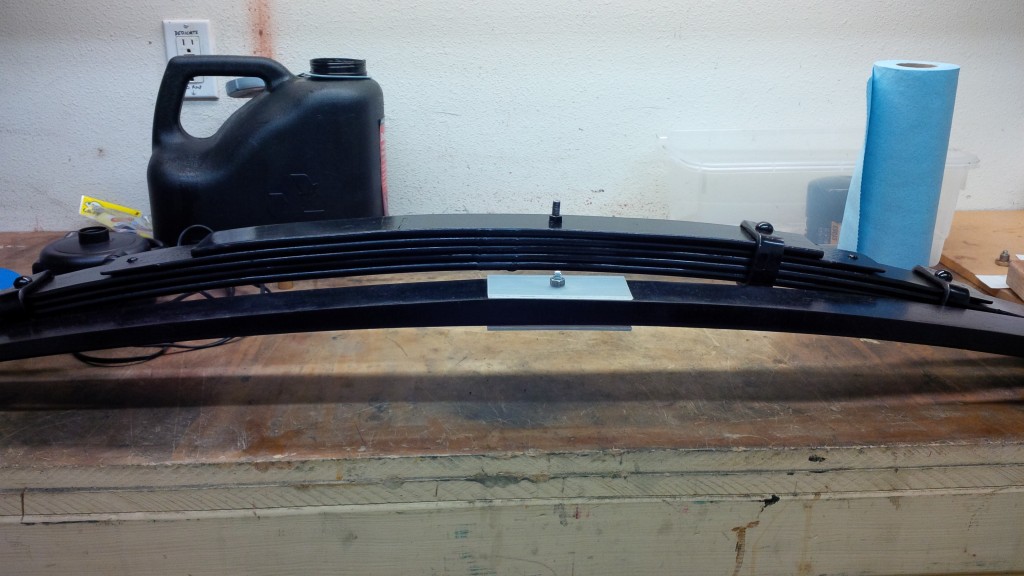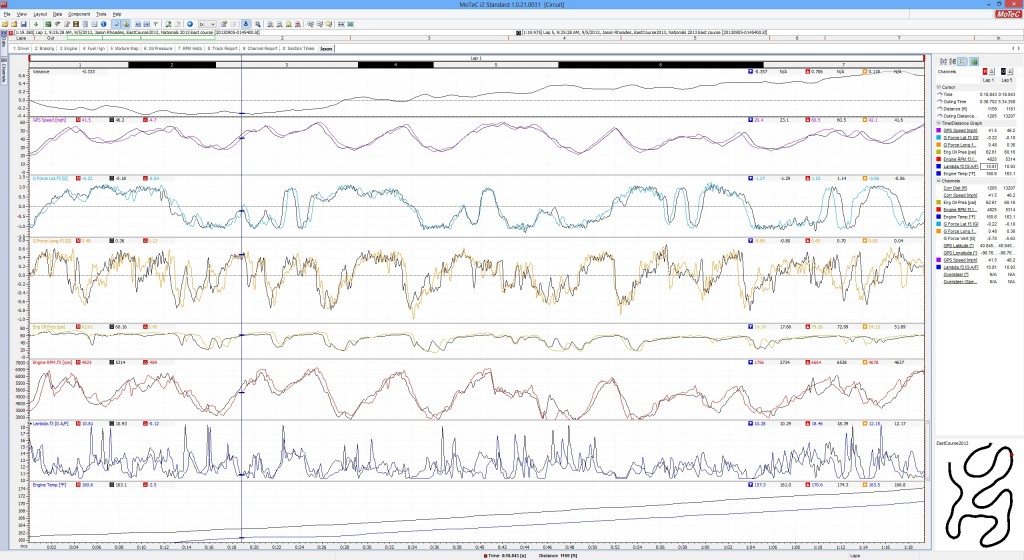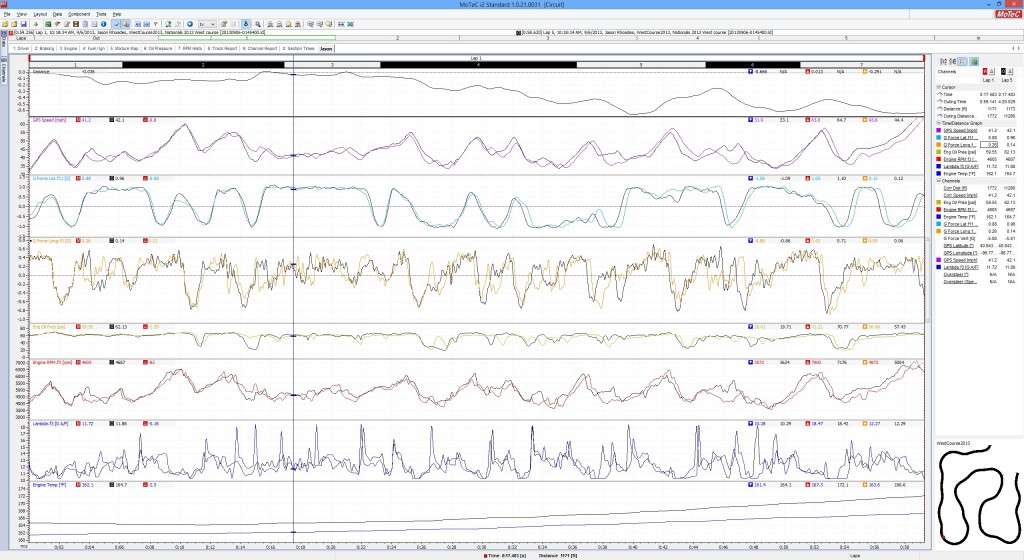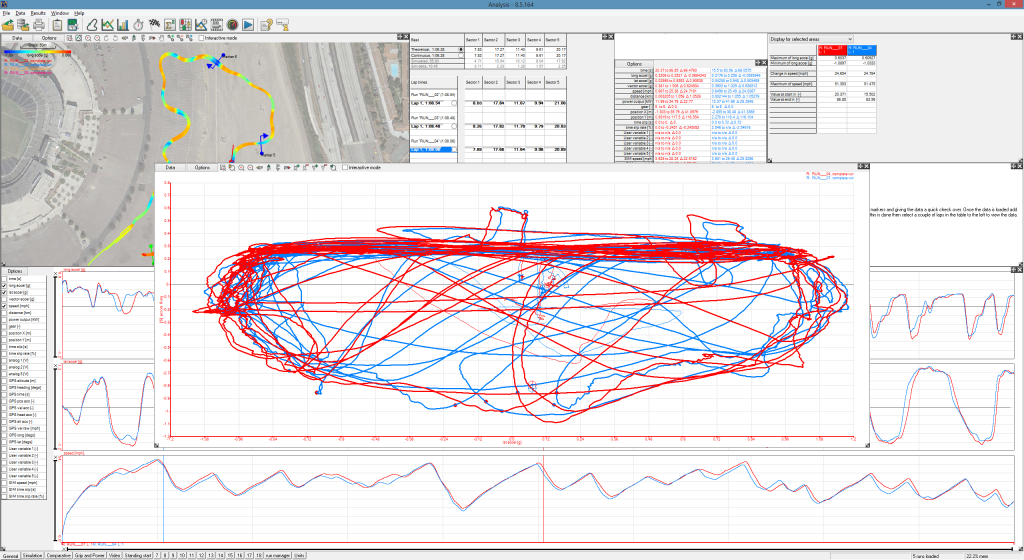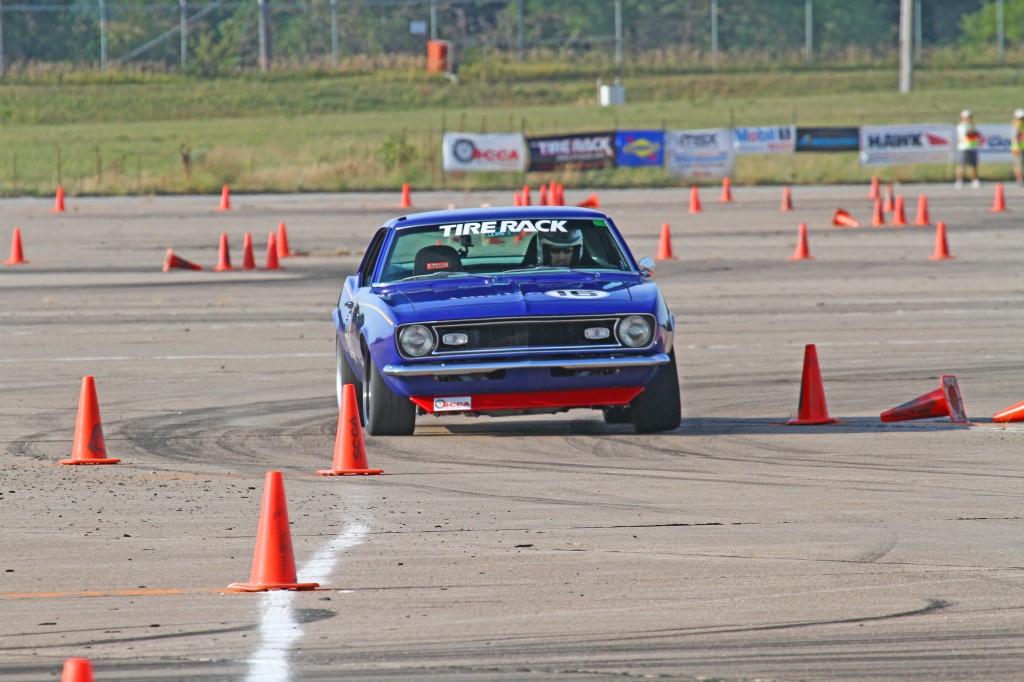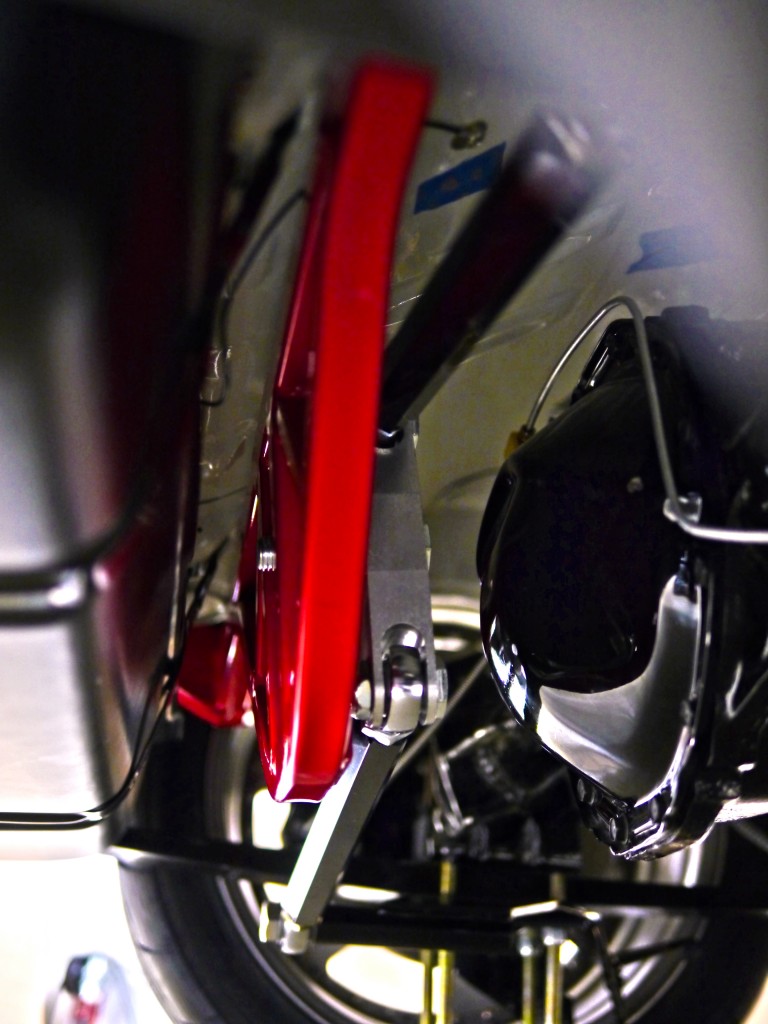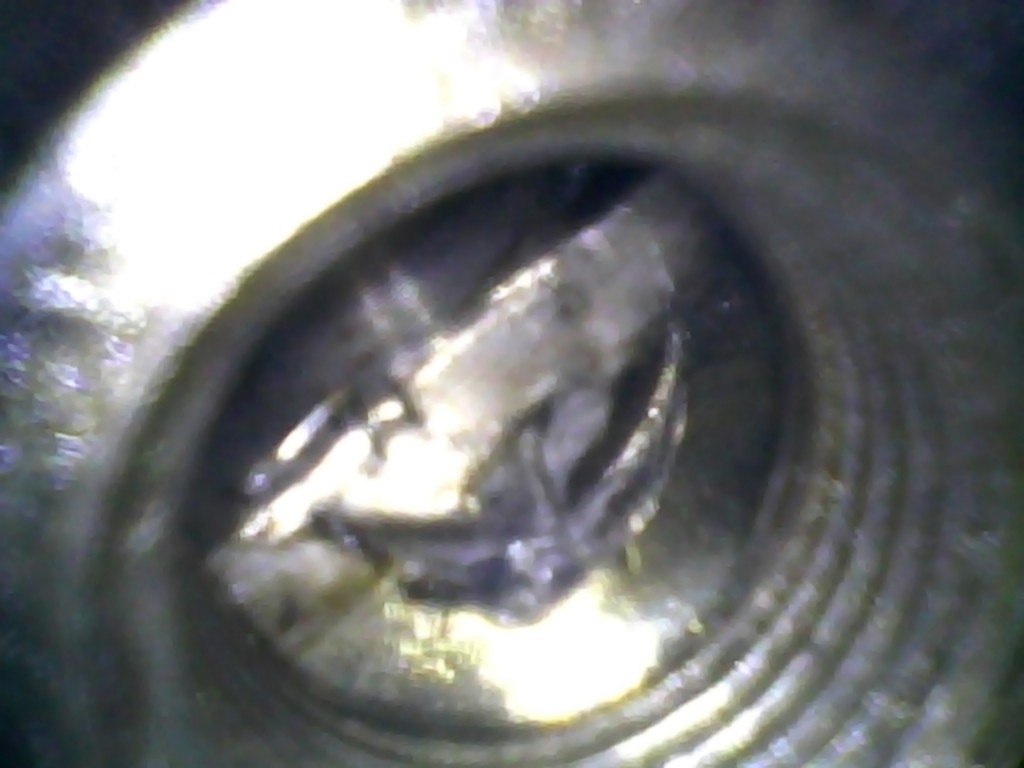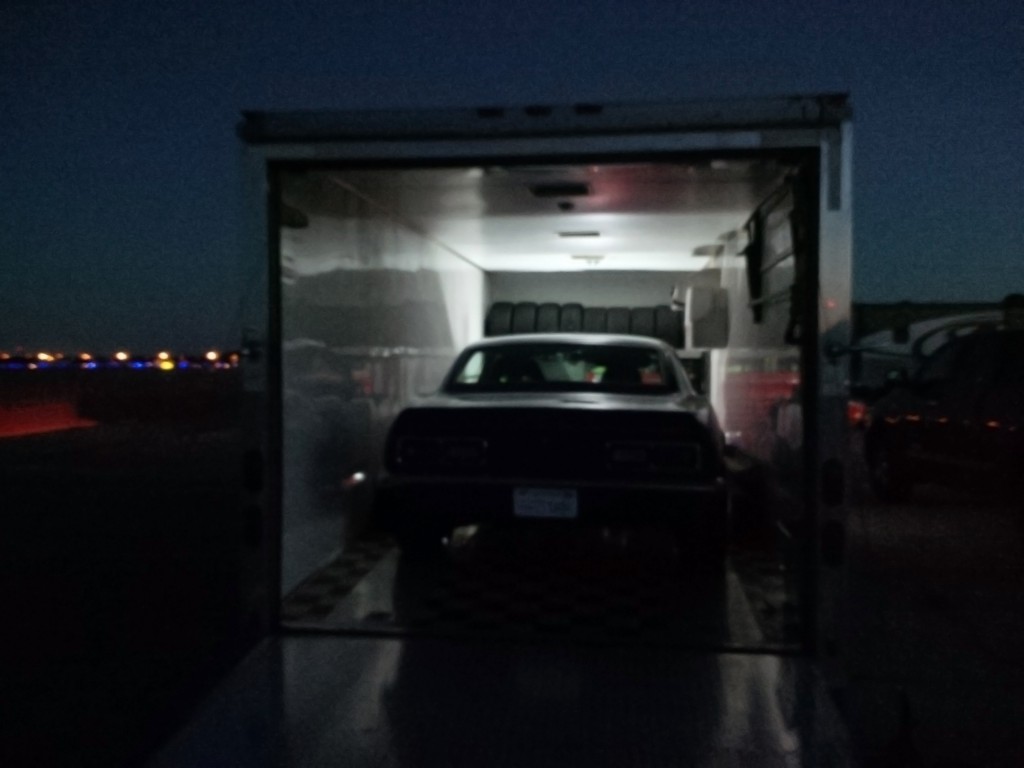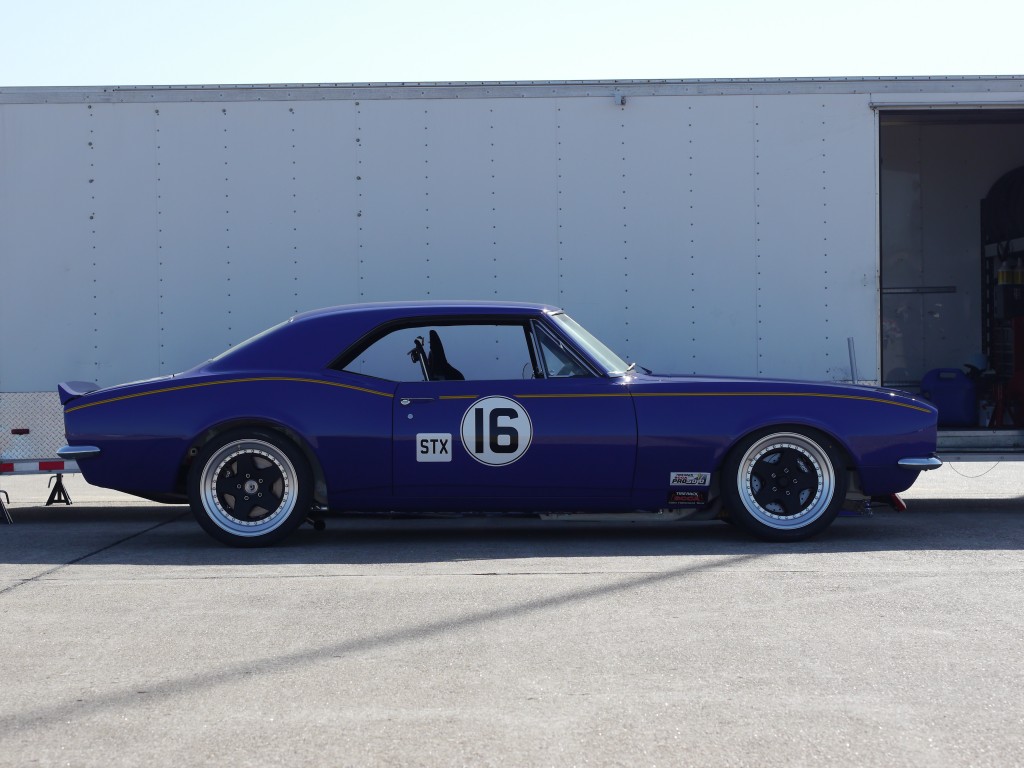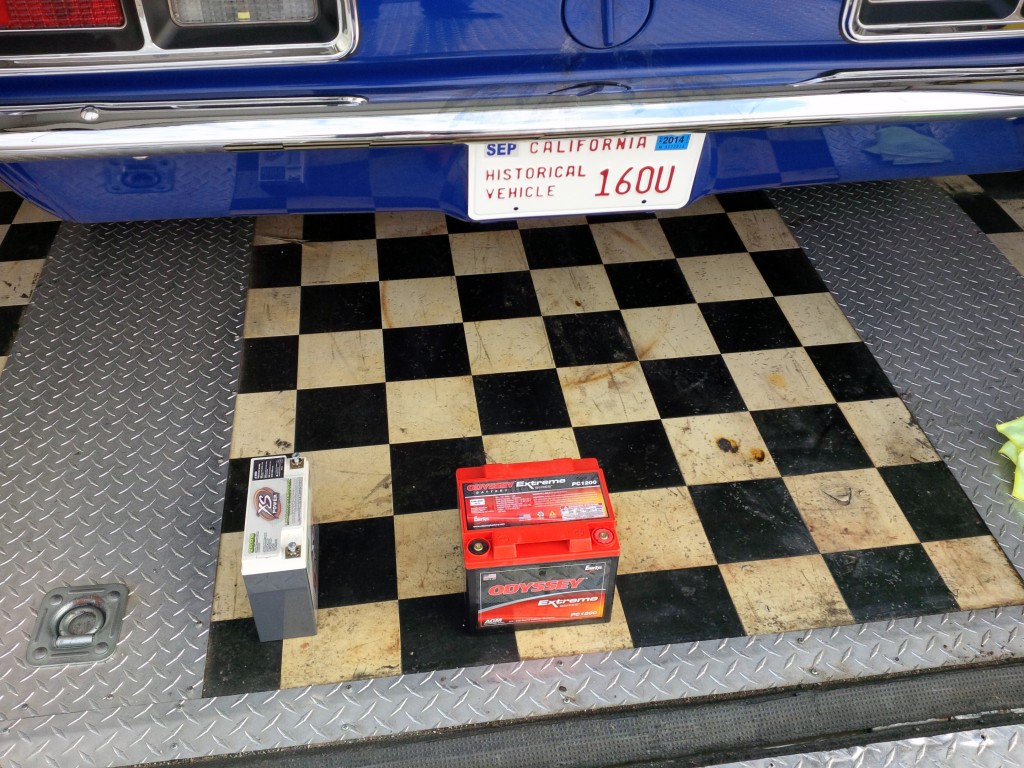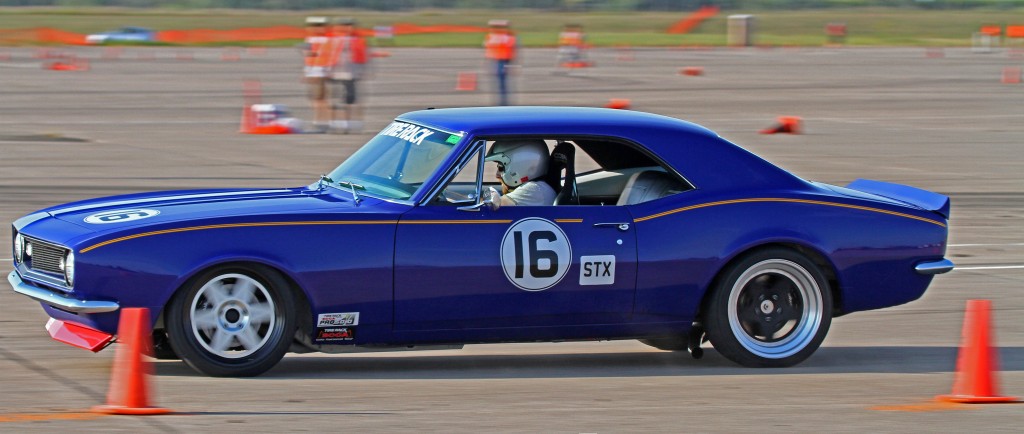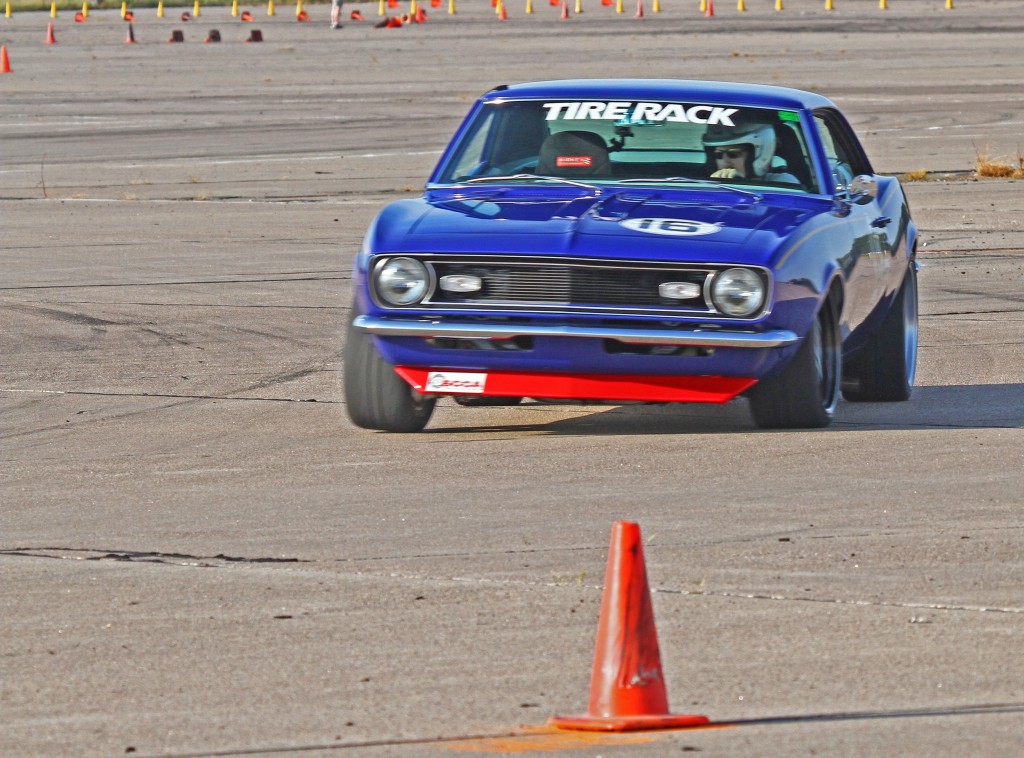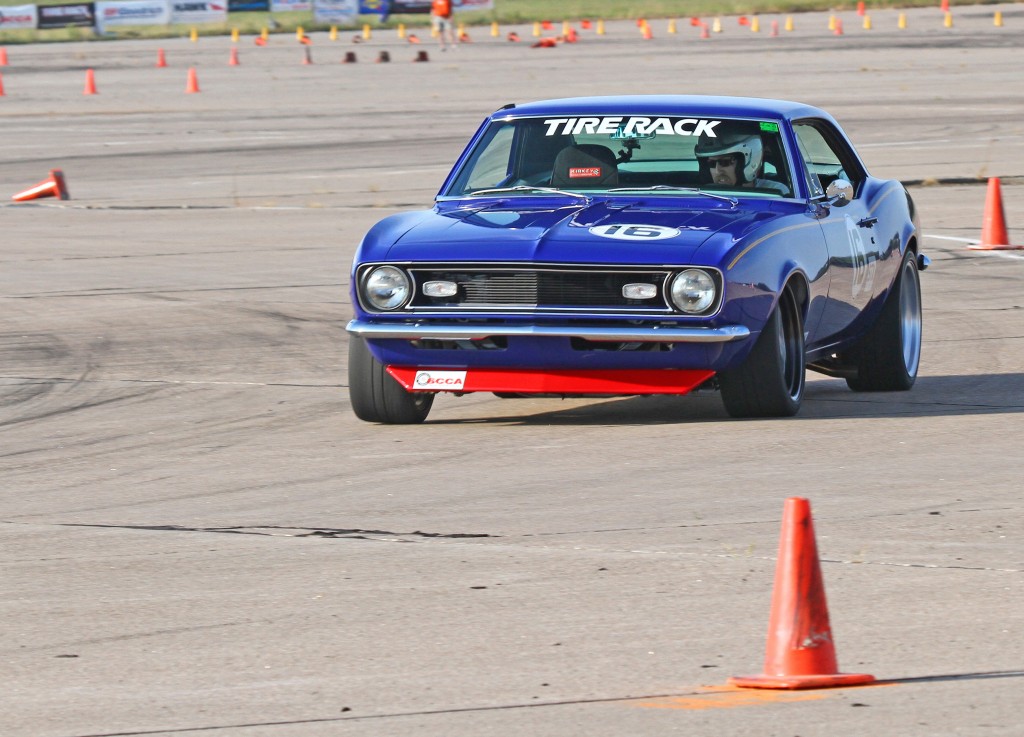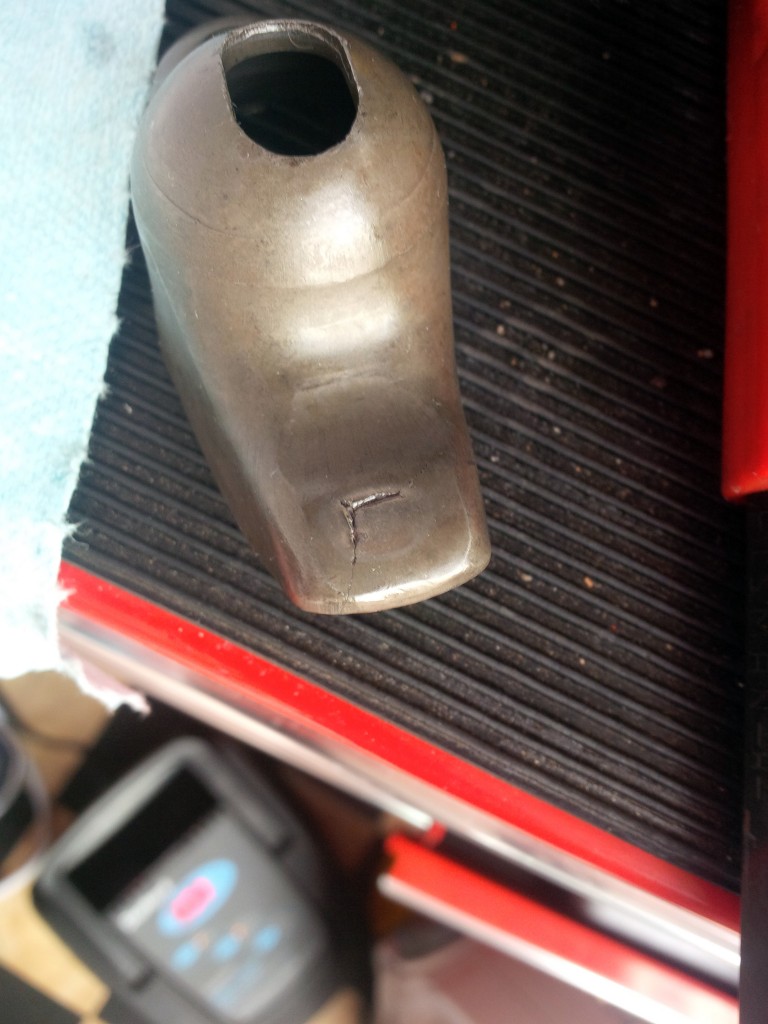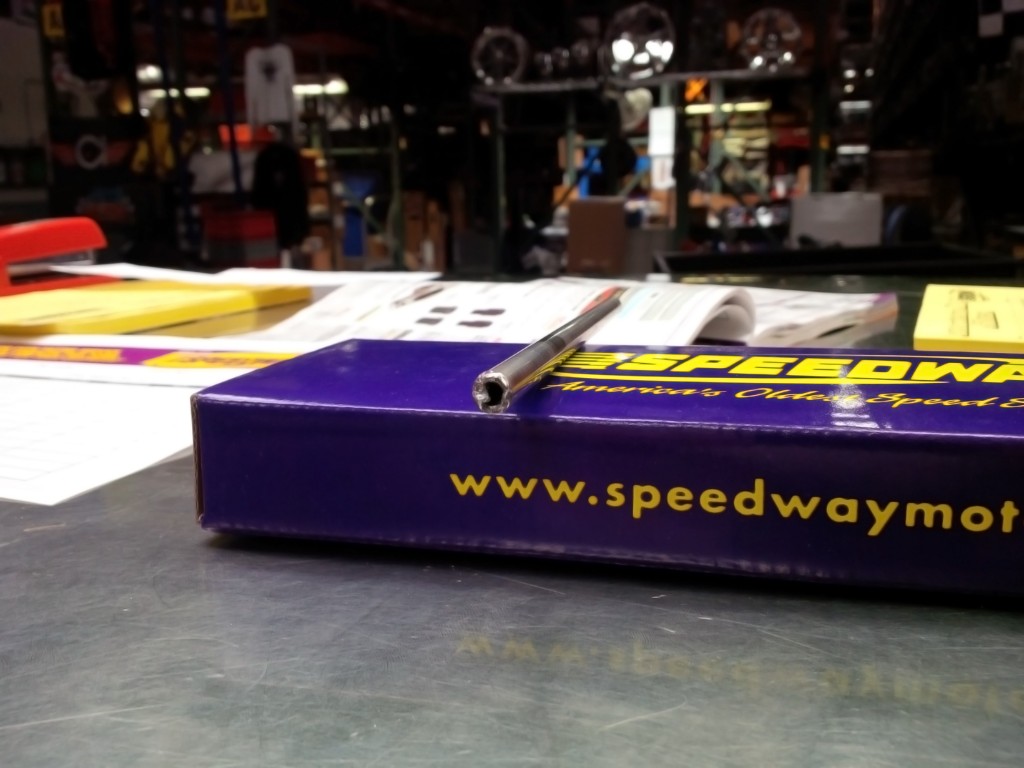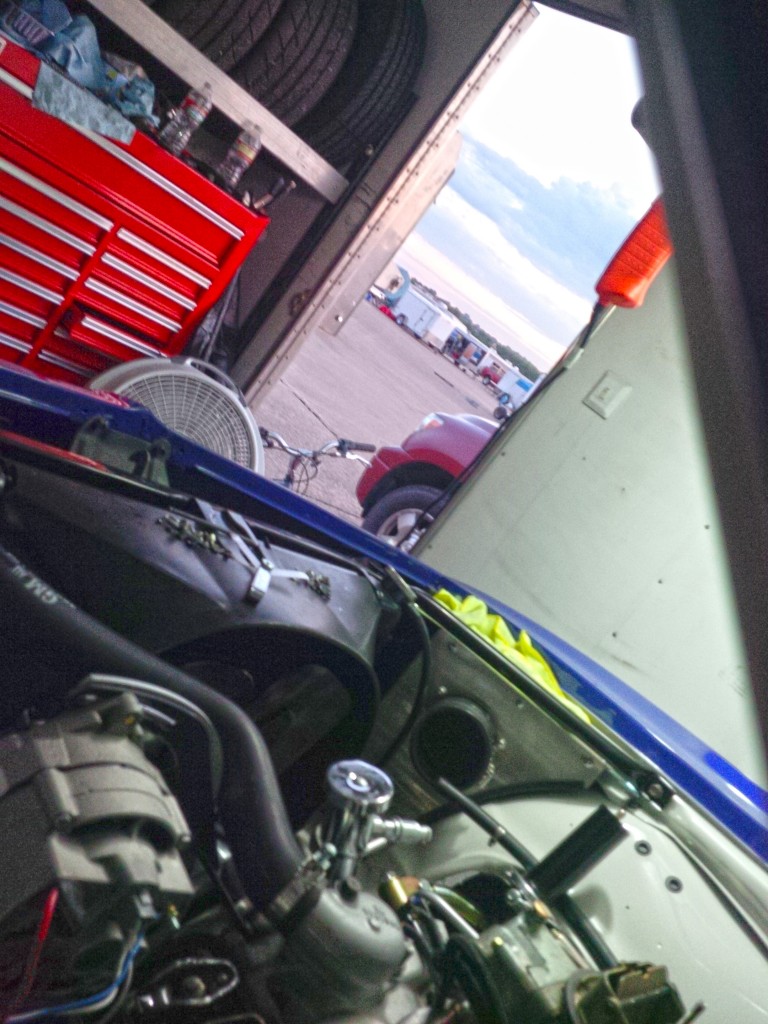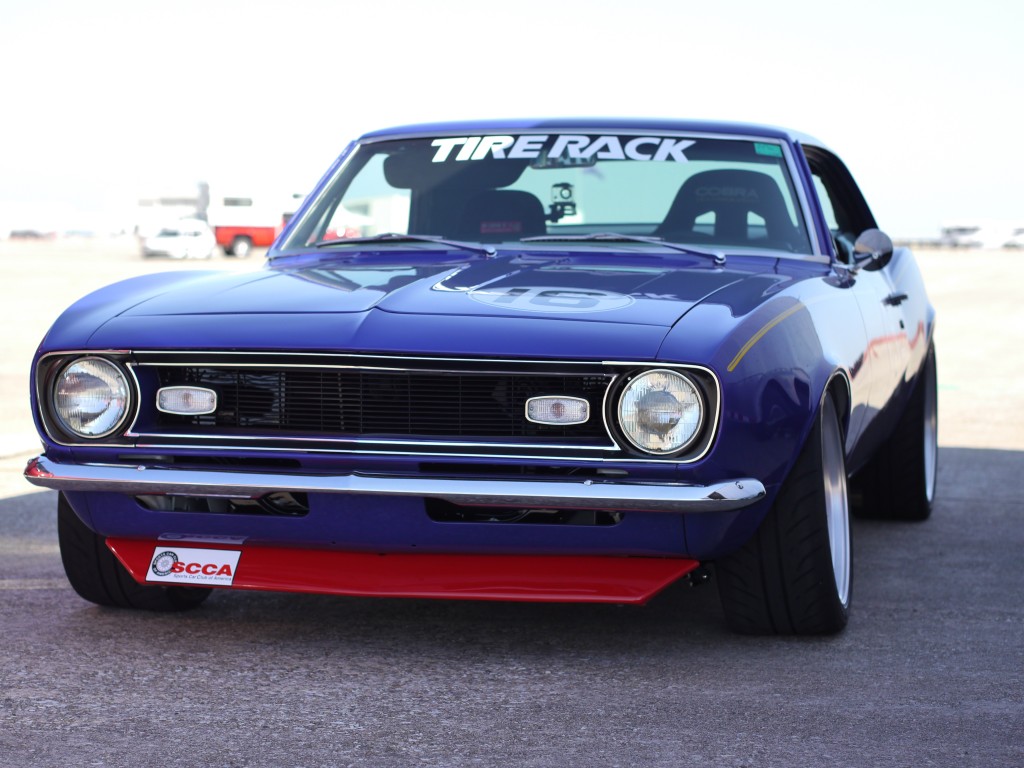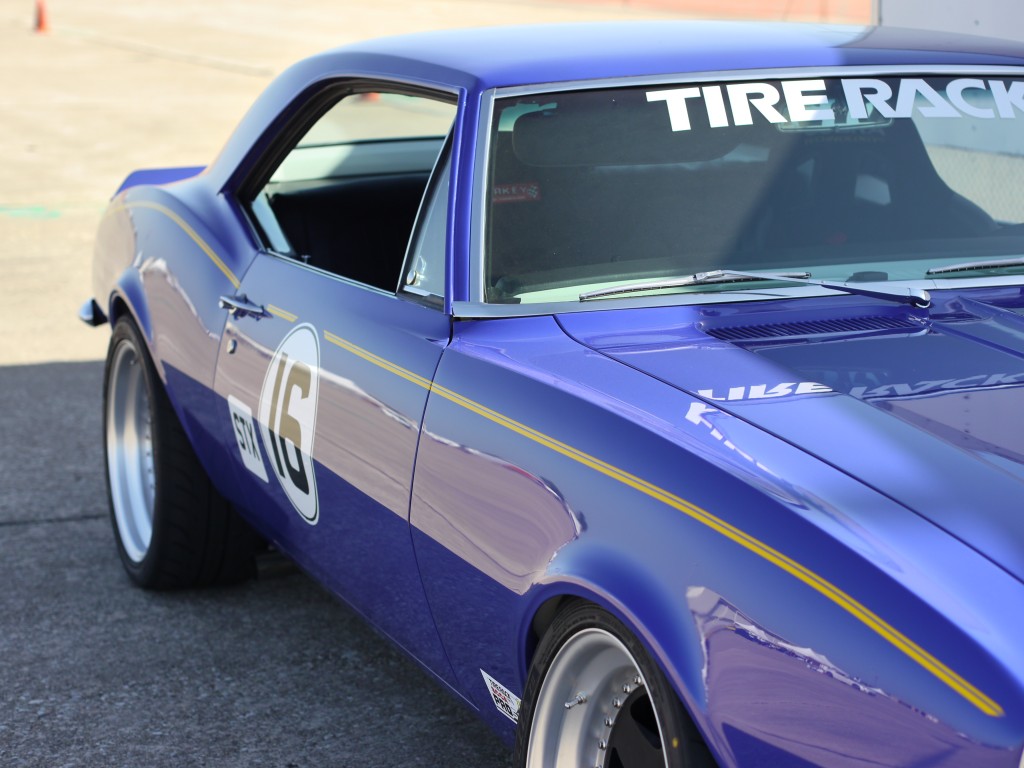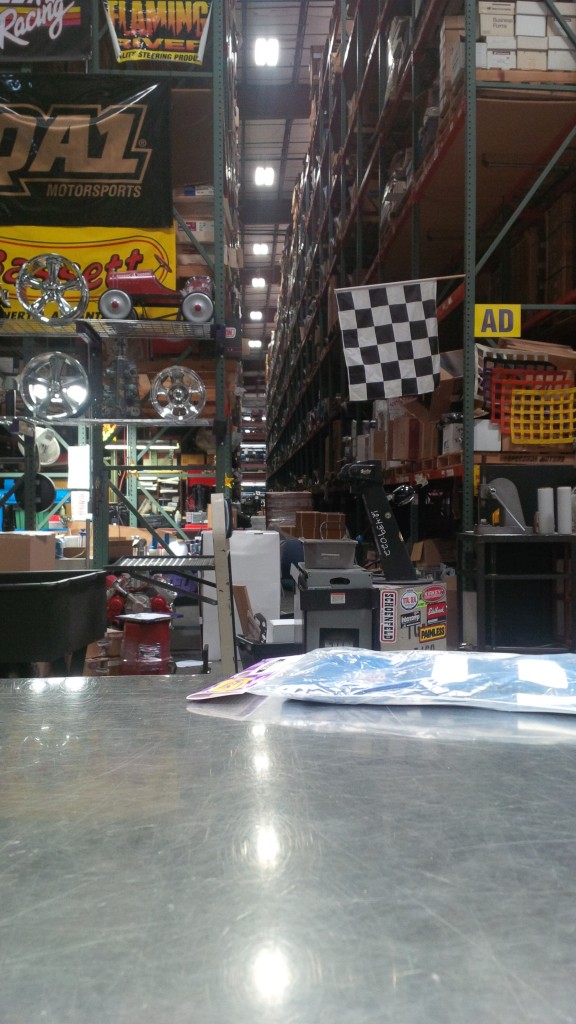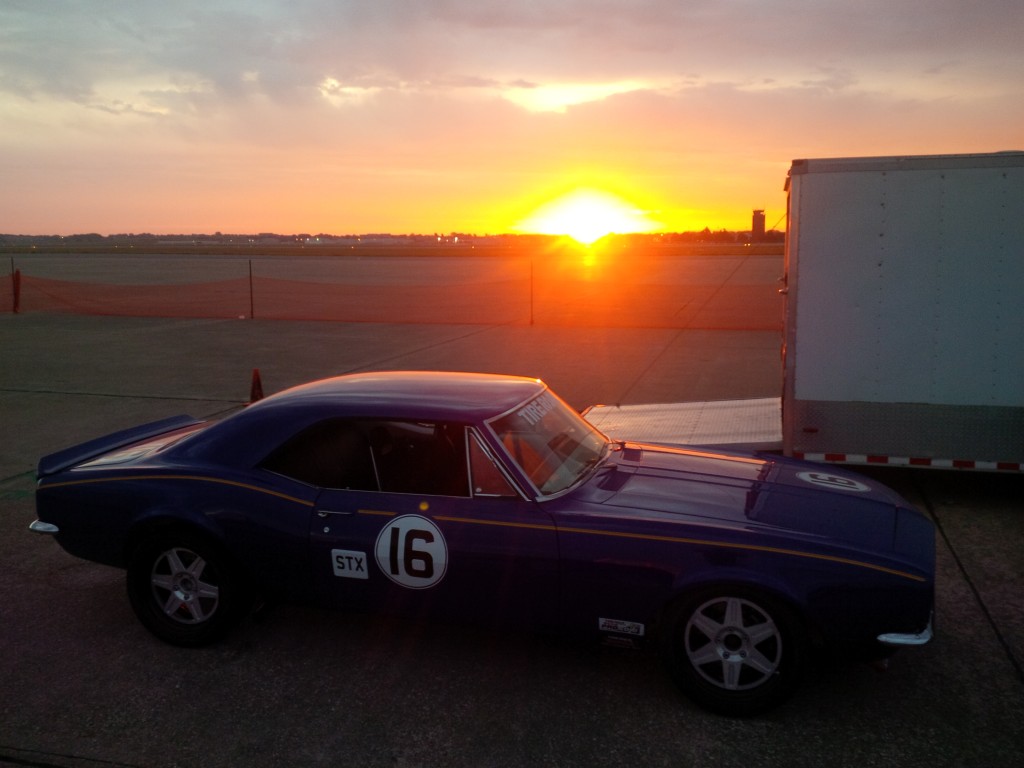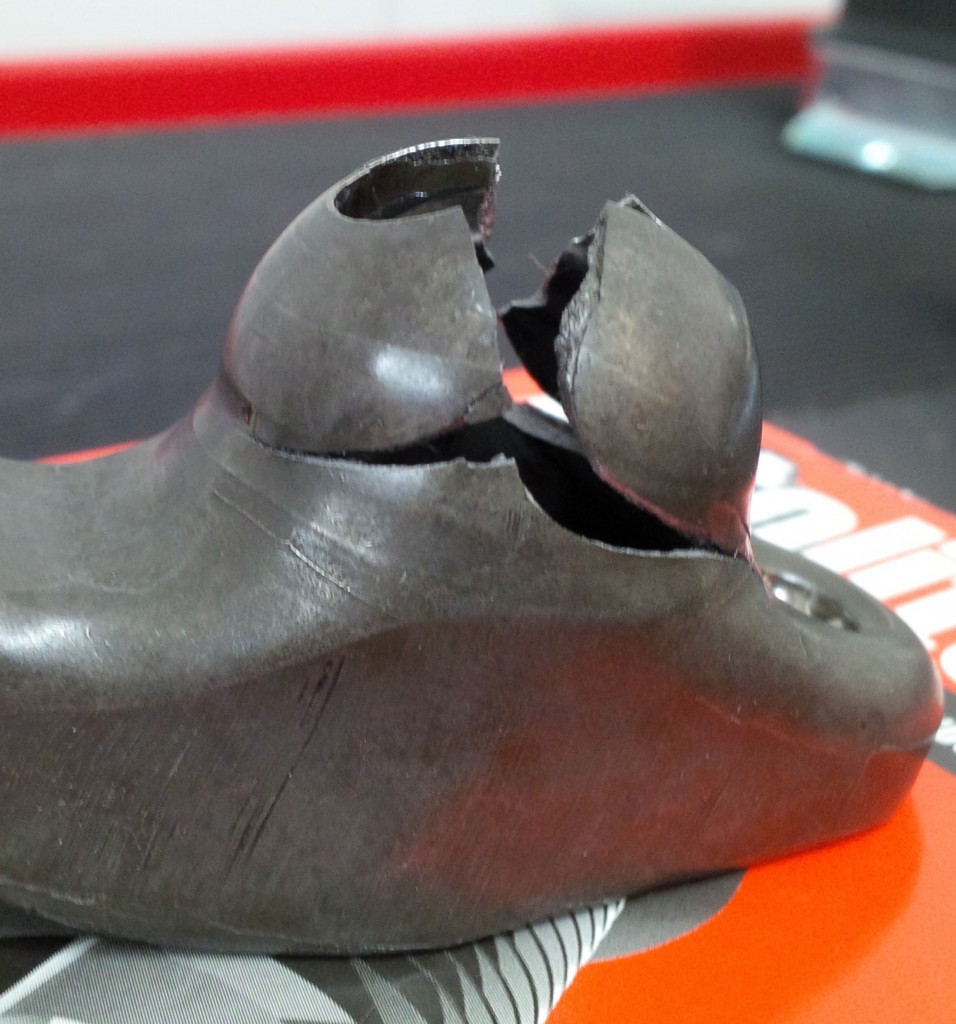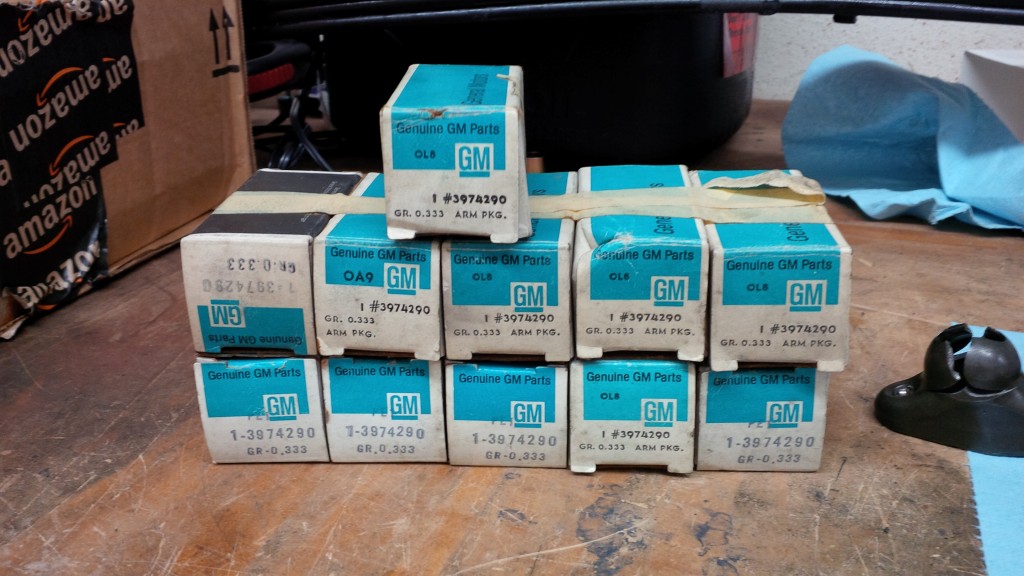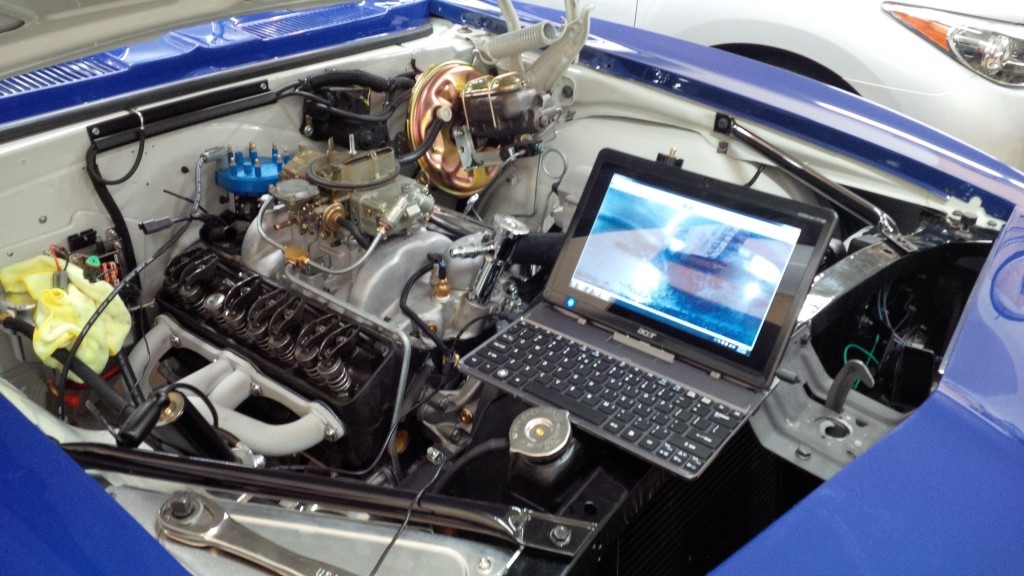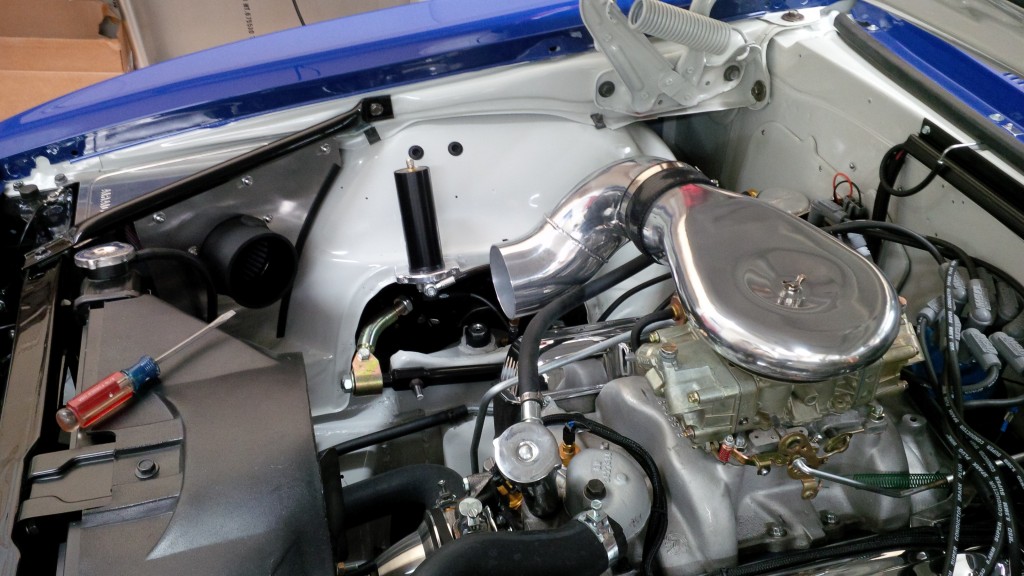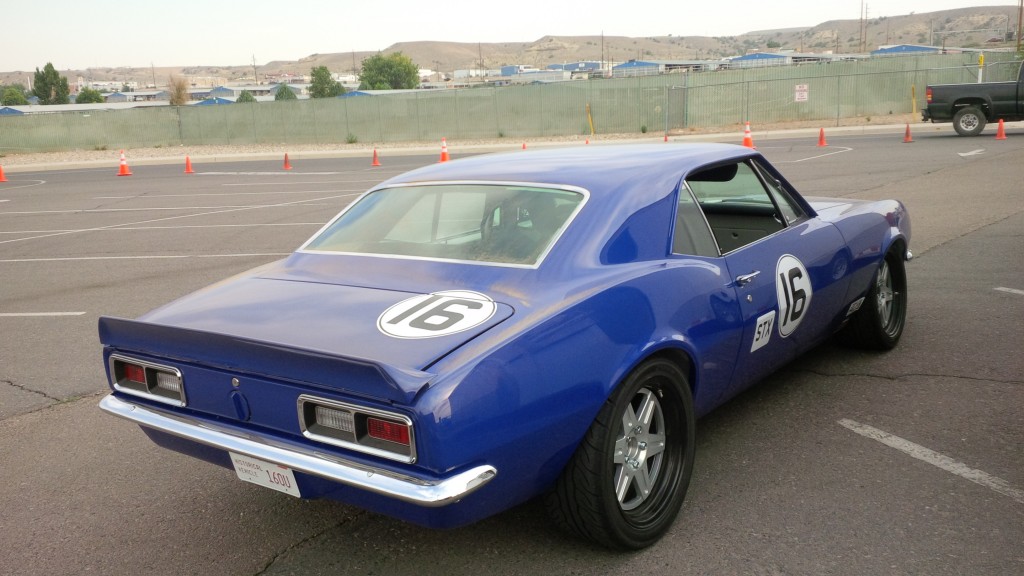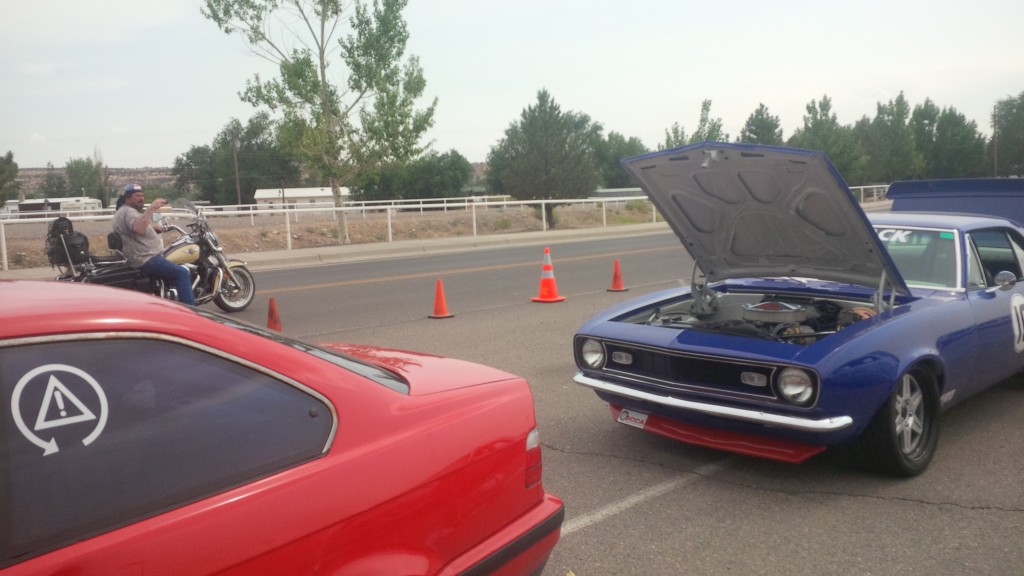Oops. Sorry about the downtime!
The cobbler’s kids have no shoes, and the IT guy’s servers probably don’t get maintained as well as they should. 🙂
The Amazon EC2 machine holding this site had a drive failure, and some time ago I’d put the site’s media onto ephemeral storage, mostly out of laziness. Had a relatively recent backup, but it took some time to upload the 10+GB of media from a crummy home internet connection.
eFLEKTOR – The only ad you’ll ever see here
Between the Camaro having achieved some of its beginning completion milestones, and it having been relegated to STU this year, I’ve had lots of time to spend on an unrelated endeavor, starting my own business.
http://www.eflektor.com – check it out, won’t you? 🙂
The basic idea here, is a product that effectively shields its owner, from their cellphone’s radiation. Primarily while they sleep-

but could also be used while the phone is on their desk at work, with the bonus of keeping it out of sight.

Phone in pocket, phone against head, and large-form-factor “phablets” are future use cases under consideration – the first product targets the 2/3 adults and especially the parents of the 5/6 teens who sleep with their phone at bedside.
Most of the other stuff out there is some kind of magic sticker that somehow protects you, without affecting signal. If it sounds too good to be true…
This device has a very large and continuous piece of steel inside (steelities anyone?) – if you have it positioned so the protective direction aligns with your only nearby cell tower, it will affect signal. In most urban/suburban environments this isn’t an issue but for anyone where it is, might be reason to move it to the other side of the bed.
Given what this blog is mainly about, I’m certain there are several engineers in the audience scoffing right now. That’s ok – I believe everyone is entitled to their viewpoint (notwithstanding the universal applicability of science/logic).
My approach differs from the competition in this space, in that I’m not trying to scare anybody. I’m not here to exaggerate potential risks, or hide evidence there may be no risk – I’ve collected all the best studies, articles, videos I could find on the subject, and organized them in the eFLEKTOR InfoCenter
The idea, is let people educate themselves, and then decide what they want to do about it. Of course I’d love it for them to become customers!
Personally, in the past 10 years, I’ve had not one but two people close to me develop brain “lesions”, which led to multiple conversations with a fellow that knows more about brain tumors than most:
Dr. Black is often used by CNN and other news outlets, any time the subject of cellphones and health comes up. My own approach follows his view, which boils down to “We don’t have enough data yet to know the long-term effects, so do what you can to minimize exposure.” This jives with the Precautionary Principle advocated by the World Health Organization.
In 20 or 30 years, we’ll look back and either say “Remember when all those people were worried about cell phones causing brain tumors?”… or… “Remember what it was like before everyone had eFLEKTORs?”
$39.95 is cheap enough insurance you end up on the right side either way.
+50, -70, -50, -1.5
Took some time in an effort to address some of the issues identified after Nationals last year. Despite the awful front suspension, my biggest problems centered around the rear of the car. The back end was skittish, never planted, and despite the stiff springs, axle wind-up was still a problem. In reviewing lots of video, the car basically never pushed, and there were frequent mid-corner corrections anytime there was a bump.
I sought to lower the car, make the rear more compliant, shift balance towards understeer, and improve axle wind-up if possible.
Review from before a set of Global West’s most race-oriented leafs, alongside some composites I’d had made.
The G-W springs were a classic 5 steel leaf pack – the pair is at least 50 pounds heavier (+50) than the composites…probably more like 60-70 pounds. They were also way too high – even with spacer block, the composites were too high. The composite maker couldn’t make them any lower. The problem is, I needed a leaf spring that was about flat at ride height – but the materials used in the lay-up of the composite leaf springs expect to always be in either tension or compression, and as the spring passes flat, things go the “other way”, which would damage the spring.
An advantage of the heavy steel leafs is they can have their shape changed – so that’s what I did. Found a place in town that dealt exclusively in leaf springs (thank goodness for the Camaro, trucks still use them!) and had the leaf packs de-arched by 2″. For starters with this pack I also took the smallest two leafs out, which should reduce the rate somewhat – I estimate these are about 180lb/in., where the composites were more like 250 (-70).
You’d think changing these would be easy – four bolts in front, four bolts in the middle, two in the back, and they’re all pretty accessible. But of course it wasn’t, took many evenings of thrashing and effort to get it put together right.
While I was at it, also took the opportunity to measure rear shock gas pressure, hadn’t done that yet. Found this handy gauge to help- http://www.rjracecars.com/Shock-Pressure-Gauge-214308-Prodview.html
Shock gas pressure has a number of effects on the shock’s behavior. It can act mildly like a spring, and can impact the damping forces. In further looking to “stick” the back end of the car, I reduced gas pressure from 150 (where it was) to 100 (-50).
End result looks pretty good though, rear ride height has been reduced by an inch and a half (-1.5).
Lowering the rear also lowers rear roll center, to about where other live-axle experts say it should be.
So, to sum up the changes:
- Softer rear spring rate, ~30%
- Lower rear ride height, ~1.5″
- Reduced rear gas pressure, 33%
- Lower rear roll center, ~1.5″
Plus it looks better now!
Some firsts today, and CAM
Been a long time without an update – hasn’t been much to report, but there are a couple developments worth mentioning.
This weekend was the San Diego National Tour, approximately the first anniversary of the car’s first autocross. As mentioned in the previous post, the car has been moved to STU where it is hopelessly outgunned, so I won’t be running it Nationally this season. Instead, for this year’s SD Tour I co-drove with Gary Thomason in his killer 2008 Viper, same car I ran with him at the 2012 National Champsionships-
The car is a lot of fun – the handling is right about where my black Viper was when I sold it (still miss that car!), but his has even more power, which is always a good thing :). Despite have a lot more power than the Camaro, the Viper is actually much easier to drive, because it has race tires, the chassis puts power down very well, and the gearing is very tall…then there’s the ABS when it’s time to slow it down.
On Saturday of the Tour I saw several nice musclecars present as part of the SCCA’s new CAM class. The attendance wasn’t great, but considering the relatively steep entry fee for a Tour (>$100), and there being a Goodguys event that same weekend in town, the turnout wasn’t bad. This inspired me to commute down in the Camaro on Sunday. I try to drive the Camaro around at least once per month, and it was due…

With the optional 4.88 final drive ration, 60mph worked out to about 4000rpm – which is a very high rpm for cruise in a small block chevy. And that was with the >27″ tall “vintage” wheel/tire setup I have, first put on the car back in November 2012, but never driven on, until today.
The taller tires effectively lengthen the gearing – on the regular autocross setup, 4000rpm would have been more like 55mph! This was the car’s first time on the freeway since the day I drove it home from Sacramento. Fortunately other than some sore eardrums, the car made the 20-miles-each-way journey just fine. The drive home was actually quite warm (~80)and I was impressed by how well the car’s flow-through ventilation system worked.
(Credit to bigtime STX Camaro fan, 2014 SD Tour STX Winner, and all-around swell chap Max Hayter for the above photo!)
After more off-season thought I had been thinking about lengthening the gearing as a means not only of extending the 2nd gear top speed, but of extending the engine’s (especially the valvetrain’s!) life. Today’s freeway drive reinforced that line of thinking. Also, that the sidepipes have got to go, for something that exists back behind the car.
###CAM###
Over the past several years, multiple series of successful non-SCCA-related “Pro-Touring” focused automotive performance events have arisen. Pro-Touring has no agreed upon definition, but most would agree it is something like “Classic American cars set up to turn and stop, in addition to go straight – while retaining streetability. A Pro-Touring car delivers the performance capability and civility of a modern sports car, with the cool of a classic.”
Some of these events have been very low speed autocrosses in tiny lots, where the car show is the focus, but others have had timed high-speed track sessions as part of the curriculum. Most of the people attending these events are learning to turn corners for the first time, but there are a few skilled veterans that have partaken in the movement also.
IMO, a few years later than they should have, and since my last post, the SCCA took notice of this trend, and created “Classic American Muscle”, or CAM. In CAM, which is an experimental provisional regional-only class for 2014, any American car weighing 3000lbs. on 200TW street tires is legal, so that would include my Camaro with a full tank of gas and its heavy battery.
When creating something this new – where you’re trying to ensnare a big pool of potential new club members – there are a variety of approaches that can be taken, along what one might call a “spectrum of inclusivity”. At one end of this spectrum would be an approach where the class starts off with a well thought-out and thorough ruleset, designed to eliminate years of obvious pending takebacks. This would probably look a little bit like a mix of our existing CP, SM, and XP allowances, where aero is restricted, some body/chassis dimensions can’t be changed, some roadgoing equipment must be retained, and there are limits on tire/wheel size, as well as resulting vehicle balance. Unfortunately this approach is also the least inclusive option on this spectrum.
At the other end of the spectrum is maximal inclusion – which means letting just about everybody in, which means you can’t bother people with any rules that would make them illegal. This is the approach the SCCA took.
If this approach gets a lot of people signed up and paying SCCA dues, creating lifelong members and participants (in their P-T car or not), then it will have succeeded. The part I worry about isn’t the early honeymoon phase, it’s later on down the road when it’s time to try to mold it into something that isn’t totally unlimited, without angering and losing the people you’ve worked so hard to attract. The unlimited nature of CAM feels like a trick the SCCA is playing on the average, naive-to-racing-rulesets P-T type, which I hope doesn’t have the affect of turning SCCA-neutral people into SCCA haters.
So what’s so wrong with CAM as it sits today? Well, let’s start with my car, which works OK for what it is – what would I need to do to prep for CAM?
- First, is junk everything forward of the firewall. Fenders, hood, bumper, lights, front subframe, engine, cooling system, etc.
- Next, is cut a big hold in the firewall to maximize setback of the new aluminum V8 it’ll be getting, paired to a Jerico or other lightweight race transmission.
- Then, build a custom front tubeframe chassis for the modern SLA front suspension that is also narrow, allowing for 315s or wider without increasing overall front width. It will have to attach to a custom cage, vs, underneath, so the whole car can get several inches lower without a frame hanging under the floor.
- All the steel gets replaced with lightweight composites, and the cooling system, front structures, etc., all get a ton lighter, lower, and moved further back.
- At that point I’d have a car that instead of 2950 with 56% front weight, is around 2600 @ 50/50. But since it has to weigh 3000 lbs. when done, ~400lbs. of ballast goes in at ground level just in front of the rear axle…
- Wait, did I just say rear axle? What I meant to say was, just in front of the new independent rear suspension that gives room for 345’s on 13’s without widening the car.
IRS? On a classic musclecar?
That picture I took yesterday – it’s an Art Morrison IRS at the left rear corner of Mary Pozzi’s 2nd Gen Camaro, the one that’s been made immortal by its video game fame.
But we aren’t done yet!
- Retrofit 4 wheel ABS
- The most awful, humongous, ridiculous aero package, ever.
- Composite doors, quarters, etc. – anything to get the weight down to the ground, just ahead of the rear axle.
- And on and on and on…how about a sucker fan? Etc.
At that point you have a decent starting point for a Camaro CAM car.
The problem still is, the wheelbase is too long, and the car too wide. So start all over with a Vega or Pinto or Fiesta or whatever other tiny little horrible car no P-T person actually wants.
Then, start over again like you’re building an AMod car, that somehow incorporates part of the body tub of a 30’s roadster, because that’s legal too.
So, if I seem hesitant to start working down the CAM path, hopefully this illustrates why. The class needs restrictions on wheelbase, overall width, wheel/tire (vs. weight), ground clearance, weight distribution, and aero. Let people get to those limits however they want, but restrict the end values of those easily measurable and understood dimensions to keep the ridiculous sorts of cars described above, from ever being built.
The current arms race in the P-T community should remind us all what has happened countless times in “run whatcha brung” forms of racing. Everything is fine until people actually start to care about winning.
To everybody out there that might build for CAM – be careful with your wallet and energy – the mods you do today, may not be legal in the CAM of 201x, should the class survive.
For now I’ll be campaigning to have my car (and perhaps similar size-weight platforms like the Mustangs from the 60’s through the Fox) moved back into STX for 2015.
2013 year-end recap, status, and look forward
Interesting timing, it was 3 years ago today I bought the Camaro. Even though it took a long time to get the car together and out to an autocross, there was a lot of frantic work there in the middle. 2.5 years is a pretty quick pace for a frame-off restoration, especially when you consider some of the special race fabrication elements that went into it.
Finally feel like I can relax a bit. In the garage sits my dream car – sure, there are things more expensive, or exotic, but this is the car I’d rather have than any other. And there’s still lots to do to make it better!
Let’s take stock of there things are now, starting with a more detailed rundown of how Nationals went, now that I’ve had a chance to look through the data.
{Nats Day 1 – EAST COURSE}
The below is a screen grab of the Motec data analysis software – still learning it, this is really the first time I’ve used it. Here I’m displaying pretty much all the values I’m recording, with my first east course run (with no time) as the Main [M] run, and the run I ended up standing on, as the Overlay [O] run. The Race-Technology software I’m used to allows you to overlay 4 or 5 runs simultaneously which is great for autocrossers, but the Motec software (at least the i2 Standard version I’m using, the “Pro” version is a $500+ upgrade) only allow for two.
What do we see here? A few things, some encouraging, some a little concerning. Let’s start with the positive-
The class winner Jeff Hurst ran a 78.2 on this course. My best scored run was a 79.9. But in actuality, my first run, which had a timer error, was a 79.3, 6 tenths faster. That first run started out slow, but from roughly the 20-second mark through to the finish, my first run was a full one second faster than my second timed run, the one I’d stand on.
This sounds very woulda-coulda-shoulda, but the point is, the car as it was then had at least a 78.9 in it with me driving, and likely a bit more if the course were chopped up into a bit finer pieces. With an even better, who knows…I didn’t drive my best, and am not a pro; seems like somebody really good could have done a 78.2.
The concerning things-
1. Why was the car so much faster on its first run? Well, I spun on the second, which made me extra-cautious in the braking zones of later runs, which shows in the data. Another thing is, the pushrod let go either on that run, or the one where I spun; sometime on that spin run is where I noticed the noise, which heavily distracted on the third and fourth runs. Also, maybe the tires were too warm? Was a single driver on Dunlops, but it was warm out, and the car is a bit heavy, maybe they got over-temp?
2. Oil pressure. The car has a high-end Milodon roadrace oil pan, with three trap doors, dual lateral kick-outs, and it all fits perfectly in a just-barely-enough-room sort of way. But if you look at the oil pressure graph, you can see it drops at times, sometimes into the teens (low of 14!) – and those drops correspond with braking events. The harder and more extended the braking, the more the oil pressure drops. In researching this, some have had this happen when the pickup comes loose from the pump; while that’s possible here, I don’t see it as too likely. More likely there’s too much oil up in the heads and whatnot, the pickup is getting slightly uncovered under braking.
I added a bunch of oil for day 2, but the West course had fewer, shorter, and lighter braking zones, so it’s hard to tell if doing so helped any.
{Nats Day 2- WEST COURSE}
On this course, the story is overall less optimistic. This was more of a handling course, not the sort of place I would expect to do comparatively well on. Here, the class winner Hurst ran a 56.3; my best was again the first run, with a 59.2 – 3 seconds back. My third run was a dirty 58.6, which is still about 2 seconds back. Examining some sector times from this course shows I probably could have done a 58.1 if my own stars aligned, so a 57.x with a better driver in it. Still quite a ways off. The only thing that helps, is that I know my head wasn’t really in it this day, and a really good driver probably could have found a lot more time than I was able to.
###
General observations from the data-
Looking at lateral acceleration – this is something I’m used to seeing from the DL1 in the 240sx and Viper days. I remember the trip to Heartland Park Topeka in 2006, the first time we ran Nationals there. Upon arrival, the 240sx was “only” good for about 1.05g in a corner, but as the surface got better, it was doing 1.25 during Nationals competition. That was on asphalt.
The Camaro is making quite a bit less grip than this, even though the surface is better at Lincoln. The data presented above is smoothed over 3 samples where is says f3 (so 3/25ths of a second average), and while it shows spikes around 1.25 in each direction, the more heavily smoothed values over the course of a corner are mostly right at 1.0. While I haven’t seen others’ STX data yet, I would bet the RX8, FRS, and BMW are making 1.2+ where I am only making 1.0. That matters A LOT.
Longitudinal acceleration is a bit happier tale 🙂
Exiting the last big left-hand sweeper on the West course, the car goes from 35 to 55mph in exactly 2 seconds, even though there was some lateral acceleration in there to create drag. In other places, longitudinal spikes over .6 when lateral is minimized. When the car was running right, it was pulling quite strong.
Below is a g-g diagram showing the car’s “performance envelope” as it existed on its first east course run.
For comparison, below is a similar chart (from different software) from an STR MX5 at a BFG Rival vs. Dunlop Direzza Z2 tire test earlier in the year, on crummy asphalt (San Diego’ Qualcomm stadium southeast lot):
Note how the “top” of the MX5’s envelope seems so flat – that’s the car spending a good bit of time at its power limit, even on a poor surface. In comparison, the more powerful Camaro’s is more oval-shaped, showing how it is able to work the tires to their limit in all directions.
“Okay, all that data was tl;dr, what did I miss?”
1. The car would have trophied if I just drove better.
2. With a superhero at the wheel, it might have got a top 10 (at least 2.3 lower total time)
3. A win (4.6 lower total time) was waaay out of reach.
Why was the car not competitive for a win in STX?
Will get to why that’s a past-tense question in a bit. But here’s the reasons, with the biggest ones first:
1. The car is not producing enough peak lateral grip, and it is difficult to maintain the limit it does have
2. On equal-height f:r tires, there is still too much rearward brake bias, making the car difficult to trail-brake
3. The valvetrain has not been reliable and is costing time either as lost power, a distraction, or both
What can be done about it?
Here’s what the car needs for its ST future. Start by addressing the lateral grip problem with:
1. Ride height changes.
The car is too damn high! I know this was just posted, but look at it again, and look at all the daylight you can see *under* the front splitter.
In the front, the car has yet to bottom out, even over the big bump we had at Farmington. Lowering the front will make a big difference on CG height, and even helps the camber curve. To get the car lower I’ll have to cut the springs a bit which will up spring rate, but that is probably ok, the car is still a bit loose, and I can back off on front swaybar stiffness if needed. Not sure how much lower it can go – probably at least 1/2″, maybe 1″. Will start to look a little funny with the tire tucked up in there so far, but that’s not important!
In the rear, the car was raised about 1.25″ before the start of the Pro Finale, spacer blocks removed to combat the axle-moving-all-over problem. The rear needs to be brought down at least that much, if not more; it too wasn’t bottoming at Farmington over the jump, can maybe go 2″ here.
Unfortunately this isn’t just a shorter spring or twisting a spring perch – this is going to require complete re-engineering of the rear end. In order to retain the leafs and good axle location, the springs will have to be run below the watts link plate on the driver side, which will necessitate fabricating some kind of extended perch to hold the spring.
If the CG can be lowered 1.5″, I believe that’s close to 10%, meaning 10% less load transfer, which I’m optimistically hoping is 5-7% more lateral grip potential, changing the 1.0g to 1.05 or 1.07. Those numbers are all very optimistic, half that is more realistic.
2. Spring wind-up was a problem, not just in first gear at launch, but also under heavy roll-on throttle in second gear. That wind-up makes for annoying hop when going straight, but in a corner, it feels like it works to jeopardize grip. The solution then is a setup that controls torque reaction better than just the leaf springs, while not introducing bind or other undesirable handling characteristics. Torque arms are such devices, as are 3-links.
3. Overall the rear of the car felt not compliant enough. Even though the ride frequency and static weight is much lower than the front, the rear tires were much hotter when coming in from a run than the fronts (and this wasn’t caused entirely by overzealous throttle). Rear suspension compliance will be addressed in a number of ways simultaneously.
3a. First is to have the rear shocks revalved with less bump damping. Even though these have the fancy regressive curves, they’re valved too stiffly; basically, they are at the soft end of what was run on a heavy, race-tired, FWD, roadrace car…a place where you can get away with a lot more bump damping than a street tired RWD dinosaur. Will probably have the new baseline be half to 1/3 the current bump values.
3b. Next will be addressing the bushing situation on the front leafs, perhaps in conjunction with #2 above. Right now the leaf springs have to twist as the suspension moves, and that twisting is another spring effect in roll. If the setup could allow for the springs to have to twist less, or to lessen the bushing resistance to that twist, it should make the rear more compliant.
This lack of compliance I feel is driving the need for a lot of the steering corrections you see me make, and even on the relatively smooth Lincoln surface, contribute to a loss of time. The 1:15 mark of this East course video is indicative; instead of a nice run into the slalom, the rear end gets bounced, and I have to give up any chance to accelerate further-
Improving the compliance should up the limits a little further, and making holding the limit easier over surface imperfections.
4. The rear roll center is probably still too high. This will be mitigated somewhat when I lower the rear of the car, as the watts center pivot is based off chassis height. At Nationals this year I had a chance to speak to both Mike Maier and Mark Madarash, two of the very best drivers and tuners of live axle RWD autocross cars on the planet. While I generally prefer to figure things out on my own, I couldn’t overlook that after peeking under the back of the car they both (in separate conversations on different days) very quickly told me the rear RC was probably too high, and that a height closer to the bottom of the diff (maybe 4-5″ lower than it is at present) is a place they’ve found to work well. The current watts arrangement is a bit against my own ethos, in that I don’t like having an adjustable component always at the edge of its adjustment range, especially if adjusting “more” in that direction could be helpful. I’ve got it as low as possible, but clearly, lower still is worth investigating, even after I bring the chassis down.
That means going back to a customized rear axle lateral locating device…either an altered watts center frame, going back to a panhard, or even looking seriously at a Mumford link. All of these choices mean welding, which probably means pulling the gas tank…all of this, a big project. One that should probably be tackled in conjunction with the axle torque management project of #2.
5. More basic tuning. Still in the early days of looking at photos of the car from Nationals, to see how the outside tires look when loaded up. Have more learning to do about pressures, and have yet to scientifically take temps. I am curious to try the car with a bit less static negative camber (around -6.5 at present) but more caster, to see if that allows for better use of the inside front. Made the first rear shock change, adding a little bit of rear rebound after the ProSolo. I think things could be better with even more rear rebound, but I need to be able to soften bump (already at full soft) and do other things to increase rear end compliance, before trying it.
Instability under braking is perhaps a bit easier, and should be made better simply by switching back to the 1″ taller 40-series rear tires. As Dunlop doesn’t make a 265/40-18, that means Hankook. Given how heavy the car is and how effortlessly it generated heat in the rear tires, this should be ok. To some extent the taller sidewall should also help with rear end compliance over bumps, with the taller sidewall functioning as a slightly taller and softer spring. Unfortunately this runs counter to the CG height lowering efforts but I think will have a very positive effect on overall driveability.
The Valvetrain is due for a thorough inspection, and some other changes to work it a bit less hard. It’s possible the occasional low oil pressure condition is a contributing factor, but I tend to believe it’s a high RPM thing. The rev limiter was lowered to 6900 for Nationals, which was barely enough really. Going to the taller rear tire will add about 2.5mph of top end, and the other change I’m considering is going from a 4.88 final drive, to an only-slightly-less-insane 4.56. Together these would bring 2nd gear’s speed limit to 70, from just under 63mph now. Unfortunately these changes would also reduce the potential 2nd gear thrust by about 10%, but if it meant the throttle was easier to use, might not be so bad, as I spend so little time matted today anyway.
To test the valvesprings to ensure they’re still ok and not cracked means pulling the heads, which probably means pulling the motor, which would also give a chance to review the dinged #2 cylinder from the compression test oopsie. Ugg, another big project. That one can probably wait a bit though.
##
All of those changes added up, I think will make a significant difference in the car’s ultimate potential, and in its driveability. It is difficult to predict a time quantity, but my feeling is the above changes, with another year of practice, makes the car a solid trophy-capable STX car at Nationals. As it was, the car earned a trophy at the ProSolo Finale, which has a generally more die-hard group of competitors than the regular Solo Championships. At the ProSolo the planets of favorable courses, favorable conditions, and halfway decent (for me) driving aligned to benefit the car so early in its development. Another year of tuning and advancement would be seriously beneficial to a car that has now only run 5 events.
Unfortunately
I was lucky to get that trophy because it looks like the days of this Camaro, or any Camaro, in STX are over. The SEB (Solo Events Board) have recommended to the BOD (SCCA’s Board of Directors) to move all ponycars (GM’s F-bodies, and the Ford Mustangs) to the STU class, at the behest of the membership.
As a bit of background, there are a lot of folks with newer Mustangs, especially the 400+hp 5.0 Coyote model, that would like a better place to run in ST, than STX. Their cars start out over 3500 pounds, which is a lot to make work on STX’s 265mm tire, 9″ wheel limit, even after working hard to get the weight in the low-to-mid 33xx’s.
They figured with the unlimited width wheels and 285mm tires in STU, the cars would be much better, and asked to be moved there.
Certainly, I think pretty much all of the ponycars (with the possible exception of the early Mustangs, which nobody runs in ST) can benefit from tires wider than 265, and wheels wider than 9″. The immediate problem though, is STU is generally a much faster class than STX – it is the place of the Mitsubishi Evo and the BMW M3.
As far off of the STX winner as I was, the STU winner was a full three seconds ahead of that. As undertired as the ponycars are, it is difficult to see how 20mm of otherwise identical tire, and 1-2″ of wheel width, are worth 3 seconds over the 2 days.
To make matters worse, in conjunction with the move of ponycars to STU, the C5 Corvette (non-Z06) is also being suggested for STU inclusion.
Without going through the entire Comparative Vehicle Dynamics series I authored, suffice it to say, the ponycars have no chance against a C5 in anything resembling an autocross. There is simply no point running against a C5 in a Camaro, Mustang, or Firebird. Something like an E36 M3 can pray for a course of nothing but slaloms, and the Evo/Sti boost buggies still have advantages in launch, early corner exit, and inclement conditions; enough to keep them in it for a while.
What I hope to see happen is rapid realization of this fact in the ponycar community, and a show of unity and support for the notion of a ponycar-specific ST class. Today, the only remaining successful Street Prepared category class is ESP – the one catering to ponycars – and if an equivalent ST class were available, I think it could be a good success for the category, the club, and the membership. In addition, it would provide a more appropriate place for me to run the Camaro.
Where does it go from here?
The path forward is not clear. One thing for certain, is I am not going to run it in STU against the C5. San Diego is just too far from Lincoln for that kind of nonsense. The car’s continued participation in the Street Touring category hinges upon it either being kept in STX, or included in “STP” – what I hope will eventually be an ST category class for Mustangs, Camaros, Firebirds, Chargers, Challengers. I’d like to see it keep the older and lighter stuff on smaller wheels/tires, and allow the heavier/newer stuff more. If the class is built to make a newer Coyote 5.0 Mustang the “Car to Have”, its numbers should be very good. I’d also love to see the SCCA work to allow certain Pro-Touring cars into this class so long as they started off as an allowed car and then met certain weight and size requirements.
So, if the SEB’s suggestions go through, the car will be sitting it out in 2014. There are some Pro-Touring type events I’d like to run, maybe a local event or something. Willing to keep the car tucked away for a while and see whether there is interest in the STP concept, for which I would bring it back out to support. Gives me more time to get some things done on it at a relaxed pace. The past 3 years building the car, I always had the feeling time was running out on STX as it had existed since 2004, and I got it done just enough, just in time, to snag a trophy in Lincoln.
If the worst happens and there is no future for the car in ST, then some years down the road I may consider making it into an even truer Penske/Donohue clone in CP trim. I’d probably try the light and narrow approach, 10″ wheels and and under 5.1 motor @2700lbs. But I really don’t want to think about that too much, because it means redoing almost everything, and turning the car into a kind of monster I’m just not that interested in right now. Really hoping we can find a way to make STP work.
Signing off for now,
J-Rho
2013 National Championships
Well, that was about what I expected…
After a better-than-expected finish at the ProSolo Finale the weekend before, had high hopes headed into the Solo National Championships.
At the Pro the car finished 5th, ahead of some car/driver combinations I had no business being ahead of. Some of it was a course that favored the car, some of it was in the problems those car/driver combos had. The Camaro at this point is rather tricky to drive – I don’t yet have a good feel for the brakes, am still learning the requisite throttle control, and overall, the car is much less forgiving than it could be. With 6 tries at each course in the Pro, it gives me the chance to learn the correct braking and throttle application points by experience, vs. going by feel or judgment. Worked there, but you don’t really get those chances in the Solo…
The Pro ended on a Sunday, and STX didn’t run until Thursday/Friday. This gave three days to further test and tune the car, and I had time slots Monday, Tuesday, and Wednesday.
Monday’s slot was used to test a shock change, with everything else from the Pro totally left alone. Up to that point, the car had always felt very “dead” in slaloms. At the car’s very first event, I’d turned the shocks from an unknown initial setting (which turned out to be full stiff) to full soft in all 4 adjustments (rear shock description). In general in a powerful RWD car I like the rear shocks set a little softer than you might want for ultimate pure-handling performance, as it makes the car a little more forgiving of incorrect throttle or brake inputs. And the car was so deadly loose early on, full soft made sense.
As the grip in Lincoln was very high and my comfort level with the car was rising, the first real shock change I did, was to take rear rebound from full soft, up to about 25% stiff in its adjustment range. The car responded very well in the slalom on the test ‘n tune course, really starting to come alive in those transitions. “More” might have been better but that was a start, and I didn’t want to overshoot and make the thing a nightmare.
Monday I was approached by the GRM crew, they were interested in doing a shoot with the car. Even at 6:30pm it was still a little bright out to do engine bay shots, thankfully Tom McDaniel was there to lend a hand, and some big sign thing, to help them out.
Tuesday test ‘n tune covered the switch from the Hankook RS3 tires to Dunlop Direzza Z2. As we were running in the first group in the morning, which would be relatively cool, and I had no codriver, I felt this was a more appropriate choice given the likely difficulty I’d have in getting (and maintaining) enough heat in the Hankooks.
The Dunlops were on the new CCW “Classic-5” wheels in 18×9. These wheels have a very nice vintage look, and since they were made with quite a bit less backspace, they can be run without spacers, while providing a much more aggressive “deep dish” sort of look. From before:
Unfortunately the car had a bit of a rubbing problem in the front with the wheels at this backspace. A little bit of rubbing is ok, but I was worried not just about damage, but about what sort of funky understeer moments this extra “brake” on the outside front tire might cause. Cut this session short with 2 runs, and had a pair of the Dunlops mounted on the higher-backspace Jongbloed wheels.
Wednesday’s test session had the new front wheel setup, and I also changed out to my lightweight “Nationals” battery. In the picture below, it’s the one on the left-
It’s an XS Power C680, which is the same form factor as the Odyssey PC680. It’s shown next to the Odyssey PC1200 I’d been running. The lithium battery is crazy light – under 4 pounds. When you pick it up, you’d swear it had to be an empty battery case. This switch saves 35 pounds, and since the car burns fuel so fast, it was probably under 2950 competition weight for most runs.
Speaking of fuel, this thing drinks it up! The tank was nearly empty on the trip out, and I decided to do most runs with the tank full (note the signs of fuel having sloshed out the back in the battery picture above) – and on this trip, the car got over 27 gallons put in…but I think the stock tank is only 18 gallons. Major thirst!
Here is video of my second test ‘n tune run Wednesday:
Was pretty happy with the way the car was working here – again, I’d had several chances to learn the braking points, and how the car was going to behave in each section. This was a 31.1, which wasn’t far off the times I was hearing from the other STX and STR guys – mostly 30.6-30.8.
One other thing I got going Wednesday were some more features of the car’s Motec dash unit. It features a full data logger with 3-axis accelerometers, and I’d also purchased the GPS option. Hadn’t got the time to get it working previously, but thanks to good support from Jeff Feit at Optimum Motorsports was able to figure the last bit out, GPS and data logging all set for the big race.
Thursday was a nice warm morning, thankfully the price we paid in suffering the heat, meant this was a Nationals where rain wasn’t a totally devastating factor for some people (my ninth trip, first time that’s been the case).
First run out felt pretty good on Sam Strano’s east course. Car was running strong..missed some spots and broke way too early in others (including the showcase turn) but a decent first run. Unfortunately when I came in, there was no time!
Turns out that happened to about 8-9 of us. No big deal, I’ll take another free shot at things…
Second run started out better, but not wanting to brake too early or too lightly, I spun the car under braking after the slalom after the showcase turn. Didn’t think my inputs were that worthy of a spin, but there was the rear rebound change, plus the bias had been shifted with the move to equal-diameter rear tires. Bummer, so my first run with a time, is a throw-away.
My “real” second run was an improvement, but still about 2 seconds off where the leaders were running. I was being very careful on the brakes, using them waaaaay too early into the showcase turn, a mistake I saw lots of people making.
Here’s the video – note the head-shake in the middle of the showcase turn (around the :20 mark)
Another thing to note in the video, is what sounds like the rev limiter as the car heads out in first gear. There are a couple other places where it does the same thing in second gear.
While driving, I thought it was the rev limiter, and was surprised how fast the course was; even with the shorter tires and lower rev limit, the car was good for mid 60’s mph in second. Gary Thomason was watching and said it sounded like things were “breaking up” at high RPM, like maybe the ignition was failing, or the valved weren’t adjusted properly. They had been adjusted recently, hmmm. It wasn’t doing that on my first run, but definitely was now, and it was throwing me off a bit, as it was a distracting sound. The one or two times I had a chance to look down as it occurred, the tach was around 6k, not near 7k where the limiter sits (6900).
Third run felt about the same as the second, and was a little bit slower. Something definitely wrong at high RPM.
Much later that day after the engine had cooled, went to adjust valves. The first few were ok, then I got to the #2 intake valve, and found it very very loose. So I tightened it, and it still seemed loose. Then I noticed bits of metal sitting there next to the valvespring. Uh oh. The rocker looked ok from the top…
But not from the bottom. Those bits of metal must have worked their way between the rocker arm tip and valvestem top at some point, causing this damage to the rocker. Fortunately the valve looked ok. The pushrod, on the other hand-
Not so good. Somehow the tip completely went to pieces. Not sure exactly how it happened, but this was certainly contributing to the high-rpm stutter the car had been displaying.
Fortunately Speedway saved my butt yet again, with a box of fresh pushrods. I don’t know in how many towns you can find a place with stock SBC pushrods in stock at 5:30pm on a Thursday night, but I am thankful Lincoln is one of them.
Got back to the site and replaced all 16 pushrods just to be safe, inspecting the old ones, and all the rockers in the process. Fortunately everything else looked fine, no apparent collateral damage.
Was a little tired by the time this work was completed but the car started up and sounded fine in the trailer at 9pm.
…
Friday started earlier, so it was cooler, still dry. I was in high 20-somthing-th place, but that didn’t feel too bad. The car hadn’t been running right the day before, and 2 seconds on a 75+ second course isn’t *that* bad for the car’s first trip out…I could try to close the gap a bit today, maybe move up into the trophies?
Alas, it was not to be. Friday we ran Elliot Spiedell’s West course, which was much more a classical handling/speed-maintenance course (though to be fair there were a few little acceleration spots). Here is my first run, which ended up being the run I’d stand on:
My head wasn’t really in it, and to make matters worse, the car was apparently smoking badly on course. Visual inspection showed the passenger valve cover leaking at the back, oil making its way onto the header. This made sense, as I’d had them off the night before, and maybe didn’t tighten that one enough, or perhaps the gasket didn’t seal.
That was an unwanted distraction from what should have been spent figuring out where and how to go faster. Second run was better in spots, but mistakes in others, working out to almost exactly the same time, plus a cone. Apparently the car was smoking even more now.
Found an allen wrench and tried the only thing I really could with everything super hot – tightening the valve cover.
Unfortunately that did what tightening in these circumstances normally does – it made it worse. I don’t have any good pics yet but apparently on its third run, the car was a James Bond smoke-screen in full effect.
Realizing I was pretty much out of it at this point I pushed the car a little harder on the third run – taking those chances netted two cones – but the raw time was still over 2 seconds off the leader, on a 56-58 second course…which felt much worse than the 2 seconds on a high 70 second course. Partly because the % gap from the lead, but also because the car seemed to be running fine. A bummer result, to never really feel “in the hunt” for a trophy, much less the win. Ended up 29th of 59.
…
What is plaguing the valvetrain? Besides the engine troubles, why was the car so slow? What does the data say? Where do we go from here?
Wasn’t this update long enough? We’ll get to that next time… 🙂
2013 ProSolo Finale
The 2013 ProSolo Finale is in the books, and by most accounts it was a success!
In SCCA autocross there are two series of events run in parallel – “regular” Solo competition consists of 3 runs taken on a given course, where there is usually a sharp turn before the clock starts, to eliminate a launch advantage. Big events last 2 days, with the course run one direction on day 1, and the other direction on day 2, with the lowest sum time winning. For the Solo National Championships, instead of running the same course different directions, you run two separate courses.
“ProSolo” consists of two courses set up in mirror-image, with competitors lined up side-by-side. Between them is a drag tree, which brings the driver’s reaction time, ability to stage the car, and their skill in launching from a dead stop, into play. In ProSolo the drivers get to run each course six times for a total of 12 runs – each course twice Saturday morning, Saturday afternoon, then Sunday morning.
ProSolo is a lot of fun, and the back-to-back runs can be pretty intense.
The week of National Championships in Lincoln Nebraska starts with the ProSolo Finale – the last event in the ProSolo series – there are winners for that event by itself, but since ProSolo has points, it also determines who is the year-end class champion. After the Finale, the regular Solo National Championships are run – half of the people run on Tuesday/Wednesday, the other half Thursday/Friday – there are over 1200 entrants so it takes 4 days!
For me this year, the ProSolo Finale was mainly a big test and tune event to make sure the car is ready, and the driver is warmed up for the Solo National Championships I’ll be running Thursday/Friday.
Having successfully completed the Pre-Nats Thrash of the previous post, got the car out to Lincoln with a long but smooth two-day trip. Unloaded the car and took these photos – the wheels are CCW Classic-5’s – 18×9, with a lot less backspace than the Jongbloed’s I’d been running. The CCWs are a bit heavier but have a nice vintage look.
I’d signed up to run the Test ‘n Tune the Friday before the ProSolo just to make sure everything was ok and to get warmed up. It was blisteringly hot that day (over 100) which made doing anything a chore. At the test ‘n tune, on the first run, the car wasn’t running right. I suspected it might be some intake tricks I’d tried, so I drove back to the paddock and undid the tricks, trying not to burn myself. Back at the test ‘n tune waiting to do my second run, the car stumbled a bit, then shut off!
That seemed strange to me, and the way it died in a not-so-sudden way, more of a stumbling death, made me think it might be fuel. In building the car I goofed and didn’t connect the fuel gauge sending wire, so I have no gas gauge – it’d been totally full for the San Diego Tour earlier in the year, but I hadn’t added any since. The Camaro holds 18 gallons, which means that with Sunday morning runs at El Toro, the Farmington ProSolo, and a few other miles of miscellaneous putting around and idling, the car burned 18 gallons!
Fortunately the fix here was easy – add gas! 5 gallons in and it was good to go for my second test ‘n tune run.
On this run, something else bad was happening – there was a bad cycling rubbing sound coming from the left rear. I’d been interested in how things looked back there, so I had the camera watching the left rear from the outside. Sure enough, upon review, the axle was moving all over the place! Big lateral deflection, combined with axle tramp, made the rear axle look totally out of control. Somehow I’d been able to get away with this setup before…maybe it was the grip from these new-gen tires on concrete, maybe it was fatigue in the U-bolts holding the big sandwich together, not sure…but in any case, it was very not happy.
To combat this, I skipped the last two tuning runs, and headed back to the pits to get to work on the car. Wanted to remove the big spacer blocks from the equation. Since the axle perches expect a multi-leaf spring pack, and I’m running a single composite leaf, would need *some* spacer block. Fortunately, the central warehouse for Speedway Motors is here in Lincoln Nebraska, only a couple miles from the event site
From their huuuuuge warehouse, was able to get 1/4″ and 1/2″ spring spacer blocks, and the 1/2″ turned out to be perfect – it snugged the plate for the driver-side watts link connection right up to the welded-on spring perch, reducing the leverage these parts had on each other significantly.
Saturday morning for the first set of runs I was rather apprehensive. It was very hot out (already in the 90’s), and the car had two failed test ‘n tune runs the previous day, and no testing on the new setup. To my delight, things went well. The car completed its Saturday morning runs without issue – though I did happen to spin on my last run. Times were quite a ways off the pace (about 1 second per side) but I was putting a lot of attention into the car – wanting to be sure it was running properly and healthy, and that nothing was rubbing or coming apart – instead of focusing on driving and hitting my marks.
Saturday afternoon was a bit of an improvement, even though it was extremely hot (100+) when we ran. For this session I moved the camera under the fuel tank to watch what the axle was doing at the left rear:
Interesting to watch – lots happening under there in an autocross run. Water temp was about 215 when I finished but all systems (cooling, power steering, charging, etc.) seemed to be taking it fine.
I wanted to adjust the valves Saturday evening before it got dark out, but doing so requires a cold engine – even after sitting for 2.5 hours after my Saturday afternoon runs, most of the engine was too hot to touch, so it was put off to Sunday morning.
Sunday arrived at the site a bit early to do the valve adjustment. Turns out the new rocker arms and balls wore-in quite a bit, and gotten far out of adjustment. That was costing the car some power and could impact reliability, so I was very thorough in getting everything adjusted properly.
Sunday morning’s runs were better – it was cooler, the cornering grip levels had come up, and I was feeling more confident in the car holding together, allowing me to focus on driving. Ended up dropping enough time to move into 5th place – with 15 drivers, good enough for the last trophy spot! Pretty satisfying to get a trophy at only the car’s 4th event ever, against some very skilled drivers in “proper” cars.
Overshadowing the excitement of that result, is how still very far back I was from class winner Bryan Heitkotter’s times. Bryan couldn’t get his Nissan 300ZX prepared in time for the Championships this year, with a silly excuse, having been called by Nissan to run a GT3 GTR at Infineon, over the last weekend he had to prepare the car. So instead he ran Charlie Davis’s E36 BMW, the car he won Nationals in last year, a well prepared car he’s very familiar with, and fast in. Bryan is running a different class for the Solo Nationals so he won’t be a worry there, though the class won’t have the same weight without him in it – for our measly entry fees, we get to run heads up against professional race car drivers! Pretty fun aspect of SCCA autocross.
Between now and Thursday, need to figure out how I can go .6 seconds faster per 50 seconds of course – which was about the gap from me to the second-fastest STX car, since Bryan is out. Some of that may come from driving, some from further tuning. Will be a busy next few days for sure!
Here is a high resolution video of my best two runs from the ProSolo.
Pre-Nats thrash
Never plan to have it go like this, but it always seems to…
Last Saturday (8/18) brought the car out to run at a little test ‘n tune. Since Farmington, I’d changed out the alternator and voltage regulator, as the car was discharging and heating up the alternator when off. Also did some leaf spring tweaks I’ll talk about later.
Had it on new shaved 265/35-18 Dunlop Direzza Z2’s on some new wheels, also had a new set of shaved Hankook RS3’s on the Jongbloeds, with the idea being to scrub both sets in and do a little compare/contrast. Up to that point had been running a 265/40-18 rear tire, about 1 inch taller.
The course was pretty fast, and on the second lap, something “happened” just after a particularly fast/high-revving section. Felt like the engine was on 7 cylinders. The car had been cutting out at strange times, so I was hoping the problem was electrical.
That’s the intake rocker on cylinder 6. Totally kafluie, bummer. Could tell as soon as I pulled the valve cover, it was sitting in there sideways. Am thankful it was an intake and not an exhaust rocker, as I hear bad things can happen to the carburetor when the exhaust valves don’t open.
Upon further inspection the neighboring areas looked ok; the pushrod was ok, as was the top of the valve. In the rocker’s destruction it didn’t send big shrapnel everywhere, and on a gram scale, its weight is in line with a brand new rocker.
Of course, I couldn’t determine this until getting some new rockers. New rocker arms, for an engine built in 1967, that are legal for ST. In a week.
eBay to the rescue! If you checked Monday, you’d find they were sold out of ST legal rockers for a ’67 Z28 clone. 🙂
The above picture is one batch – a set of 11 NOS rockers with a part number that supercedes (http://www.gmpartswiki.com/getpage?pageid=85941) what was originally put on the cars.
The look, feel, and smell of the boxes brought me back to a time…technically before I was born, I suppose! A real treat.
The other batch was for a complete set of 16 used factory “o” rocker arms – a long story. Wasn’t comfortable in the health of any of the rockers on the car, so all got changed – all exhausts are new, and 5 intakes got used “o” rockers. The #6 exhaust rocker was showing signs it was on its way to suffering a similar failure, glad I changed them all out.
To keep this from happening again, will be lowering the rev limiter on the car to 6900 or 7000. This will take away a few mph on the top end, which is already being further reduced by the shorter rear tire I’ve moved to. Because of this I will likely switch to 4.56 gears next year from the current 4.88. As it is with the /35 out back, the car should be good for about 65mph in second, which is good enough for most Nationals courses.
If it runs that is, will find out tomorrow. Did a totally boneheaded move while diagnosing/examining things – threaded in the compression tester too far while testing the first cylinder (#2).
Far enough, the piston hit the tester when I turned the key…was able to get the tester back out, but it boogered up the spark plug threads a little in the process.
So in addition to the rocker arms, ordered a tap kit for spark plug threads, and an digital endoscope for examining the cylinders. Figured I could use it to look inside cylinder #6 also, where the rocker failed, to ensure it wasn’t caused by any sort of piston-valve contact.
It was a fun tool, for only like $37 on Amazon – a lot cheaper than the standalone units I’d seen for sale. Being USB attached, made it easy to share pictures of my ineptitude like this:
Going to try running it like this, though I know sharp edges can cause all kinds of problems. If it’s no good, I won’t be making the haul to Nebraska.
…
If this is where you are 4 days before you plan to leave for Nationals, you might have a problem:
What else…
Full oil/filter change, along with a 6 quart “clean oil flush” to try to get out anything bad that might have been in the pan, without pulling the pan.
Have some minor exterior/appearance changes that I think really work, people can see them in Nebraska assuming I make it.
Put in a cold air intake – I’d noticed at Farmington, the car was unhappy for Saturday morning runs when it was hottest out. While more power isn’t really what the car needs, this should at least make it more consistent. I also plan to have it help with splashing-fuel management which I’ll explain later.
After Farmington I’d noticed some rubbing in the left rear – the wheel had traveled to places in relationship to the body, it shouldn’t have been able to. As it was, the left side of the axle was sitting about 1/2″ further forward in relation to the springs, than it should have been.
I deduced this was due to the spacer blocks I’d been using – they have a little post that comes out the top, to keep them aligned with the upper portion of the leaf spring pad. As supplied, the post was too long, and I had to cut them down to fit up against the axle. That was fine at first, but I later decided to add an additional spacer that adjusted pinion angle downwards; the thing consumed the post height, leaving no post from the main (1.5″) spacer block to engage directly with the axle.
Well that’s no good! So, new spacer blocks ordered and installed, with full height posts, to keep engaged to axle even with pinion angle adjuster.
All of this leads to my latest thinking on leaf springs – that they’re really not that bad. The problem is nobody makes the right leaf springs so everything ends up a bad compromise.
You don’t want to have to run a spacer block – they separate the parts that are there to help control the axle (the springs, and in my case, the driver-side watts mount) from the thing they are trying to control. This increases the leverage things like hard acceleration and big lateral forces have on the components.
But to have no spacer block, you have to have a spring that has the right resulting shape/height at your ride height. In the world of coil springs this is a piece of cake, because there is big selection on spring rates and free lengths, then you can almost always change your perch heights. With those things, you can account for a lot of variation in sprung weight, desired ride height, and desired spring rate, to get just what you want.
With some quick strings and eyeballs I determined I need a leaf that is roughly flat with the car at ride height. How to get there?
The first choice to make in leafs is steel or composite. Steel has been around forever and it’s fairly commonly known how to get the rate you want. The problem is they are heavy, ridiculously heavy!
In the above photo, the composite leaf weighs less than 10 pounds, the steel weighs over 50! Guess which one is stiffer? You’d be right if you guess the composite.
The problem with composite springs is they aren’t designed to go over-center, or flat. There are varying levels of cloth set in there in different directions, and everything goes backwards when the spring goes from a “U” shape to an “n”shape (or from a smile to a frown, when seen from the side).
Steel should be able to do it, if the springs are designed for it. The steels pictured are the lowest ones Global West sells, which they say lower the car 2″ from stock. Whose car? Those sorts of statements bake in an assumption about what the car weighs – and my car is quite a bit lighter than most, especially in the back.
The steel springs have 1” more “free arch” than the composite pictured, which is already 1.5″ too much free arch. Can maybe have the Global West springs de-arched (a trait unique to steel) but it will take time, won’t be able to do it until after Nats.
Higher res videos from Farmington ProSolo 2013
Stuff on Youtube usually looks a bit crummy, please feel free to download these if you have a decent internet connection.
Left side run (45MB):
jrho_farmington2013_left
Right side run (42MB):
jrho_farmington2013_right
Farmington ProSolo 2013
Got back late Sunday night from the 2013 ProSolo held in Farmington, New Mexico. Lots of firsts for this event.
Starting with the trip there – it was the first time I’d ever driven through a sandstorm. Didn’t look too bad on approach, but turned out to be about 35 miles of 40-50mph winds 90 degrees to the road path.
Truck and trailer took it like champs, and got a few pictures at a couple spots where things calmed down a bit.
Unfortunately the winds blew open the rooftop vents on the trailer, causing a lot of dirt and sand to make it down onto the car.
Yuck! Dirtiest it’s ever been. Fortunately the first few runs got a lot of the dirt knocked off.
To recap from previous events, the car arrived with new rear calipers to reduce rear bias, a bunch more low speed bump damping in front, the rear lowered 1/2″, and a new ignition system.
All these changes were good ones, the car was much better than El Toro.
Another first, was in the reliability area – the car completed all three competition heats (two on Saturday, one on Sunday) without an issue. I didn’t really need to do anything to it all weekend, and could focus on driving and getting a feel for the car.
For those not familiar with ProSolo, it involves a pair of courses constructed in mirror image. Two drivers start from a drag race tree and complete their course, then cross over and run the other side. In each heat you run each (left and right) course two times, for a total of six runs on each course each weekend.
After the first group of drivers ran Saturday morning, I had the quickest time on the right side course! While that is just about the least meaningful thing one could hope to have accomplished in a ProSolo weekend, it felt like a pretty good start, especially since STX had a decent class with 9 entrants, many of whom are trophy contenders at Nationals in the class.
Of course once the second drivers ran thing returned to looking more bleak, especially with Steve O’Blenes’ fantastic performance on the left-side course.
The town of Farmington is a lot like most small towns we autocrossers visit. The people there aren’t accustomed to seeing fancy Corvettes and Vipers and old Camaros, and it was a kick to see them getting a kick out of our cars. The grizzly biker above stopped in the traffic lane to take a cell phone pic while the car was in grid for Saturday afternoon’s runs.
The second set of runs went better, and the last right-side run in that heat was maybe the first halfway decent run I’d put together in the car. It was still a ways off the pace (about .5 on a 36 second course) it only had a bunch of small mistakes, nothing major.
Received many nice observations from folks afterwards, the car seemed to be working better. The “your car appears to be working ok” compliments sounds similar to “your car looks cool” but are a lot more valuable, and this is the first time I’d heard anything like them for this car.
Sunday morning brought cooler weather and a chance to move up. Here are two videos from the morning, my best clean left and right side runs. Still a bunch of mistakes, and overall not very good driving – but that can be improved with practice.
Left side:
Right side:
Have some thoughts on the next round of tuning changes, will put those together in a future post.
This was a good solid weekend and a nice job by the region in putting on a solid event. A bit further than what was my favorite event of the year (Wendover) but Farmington served up some of the transit drama and pleasure Wendover was known for.




